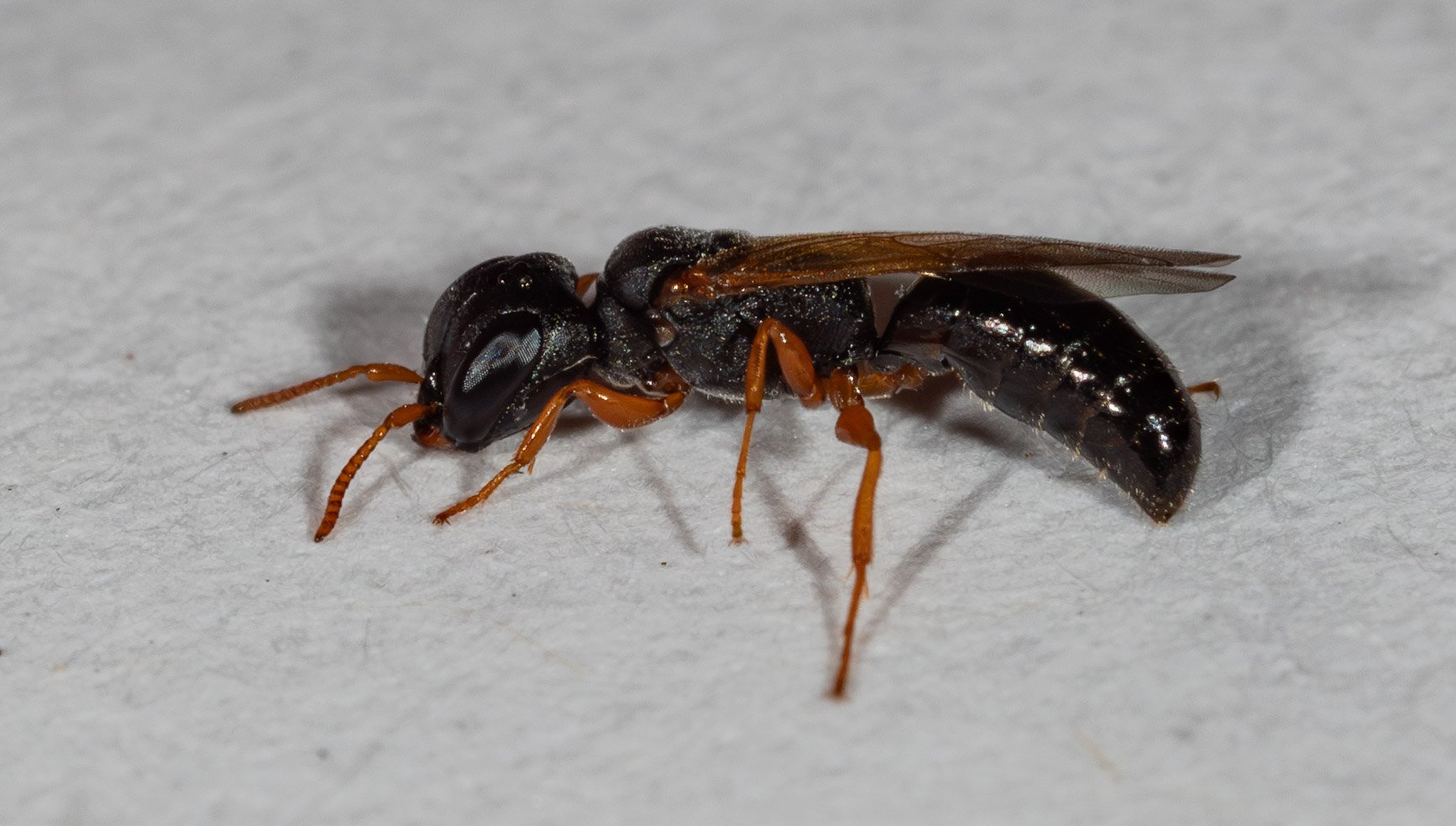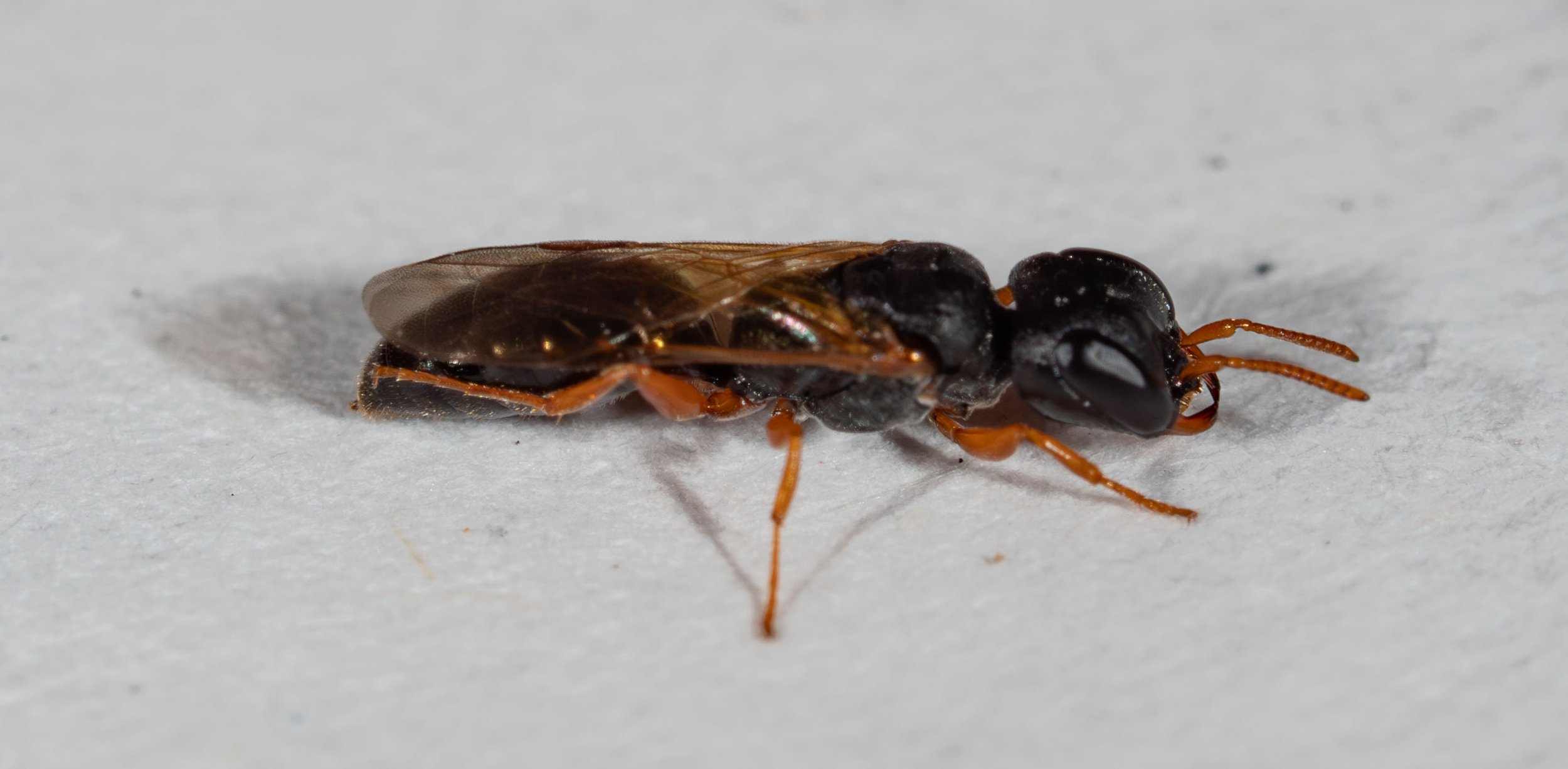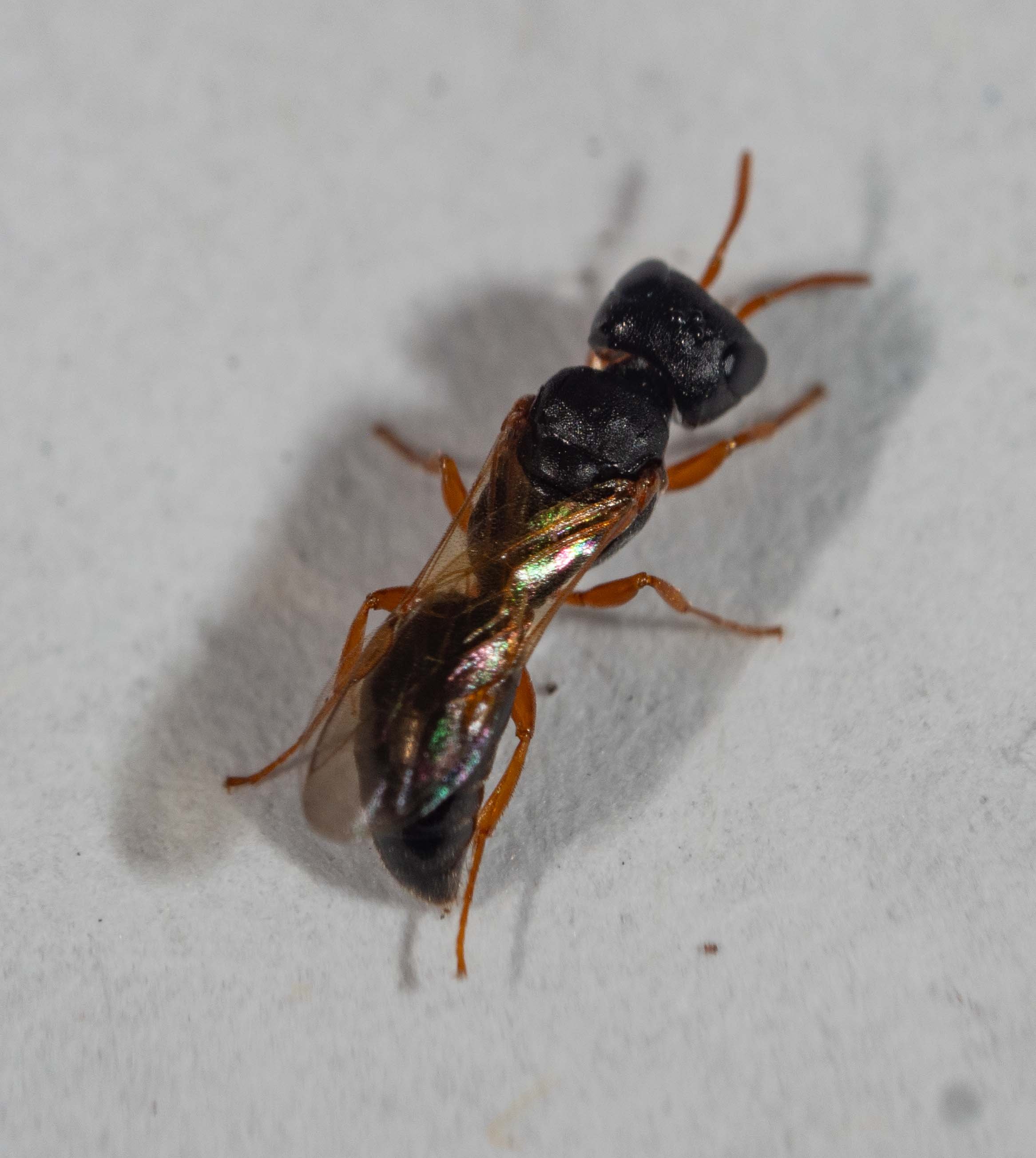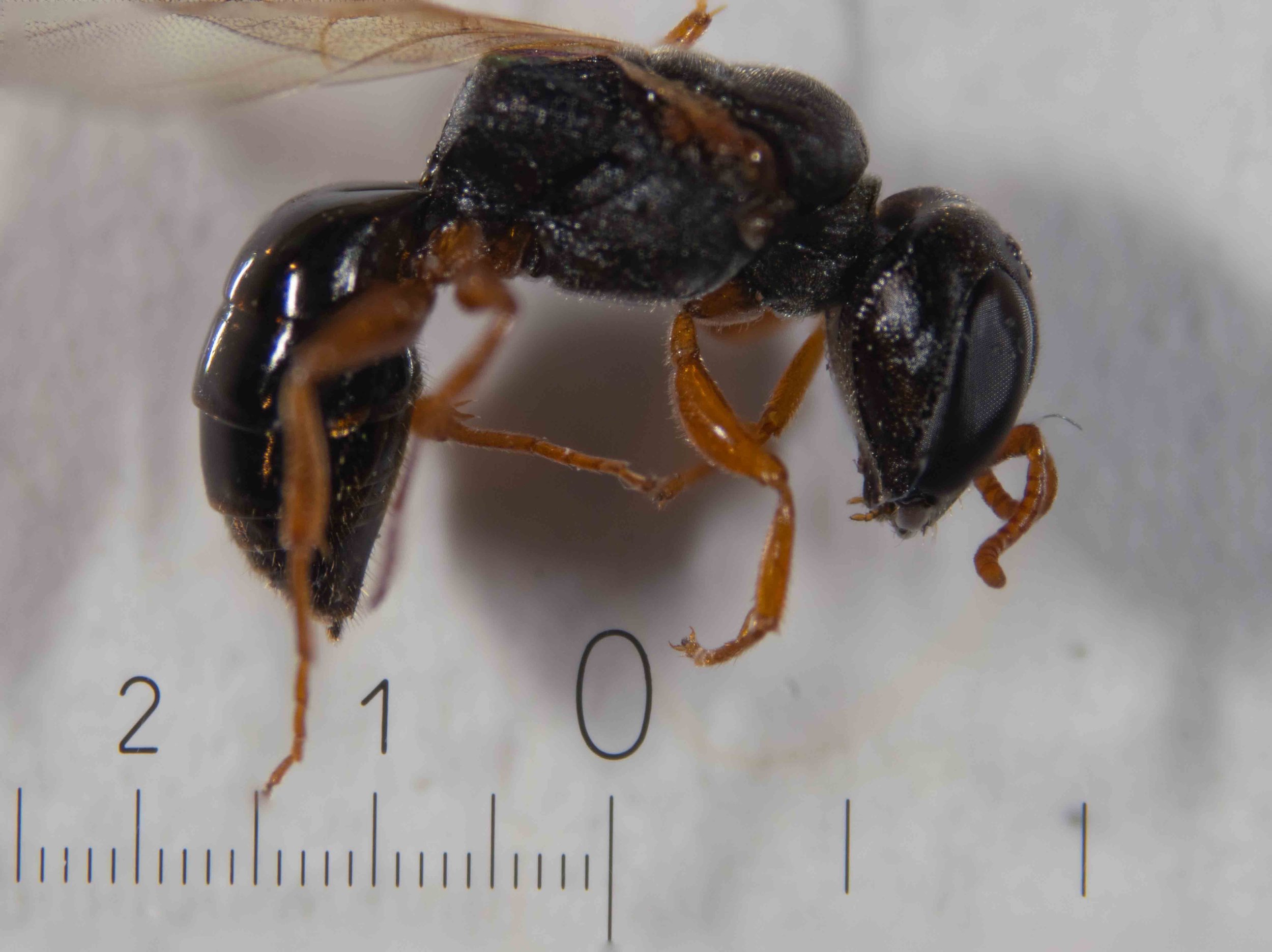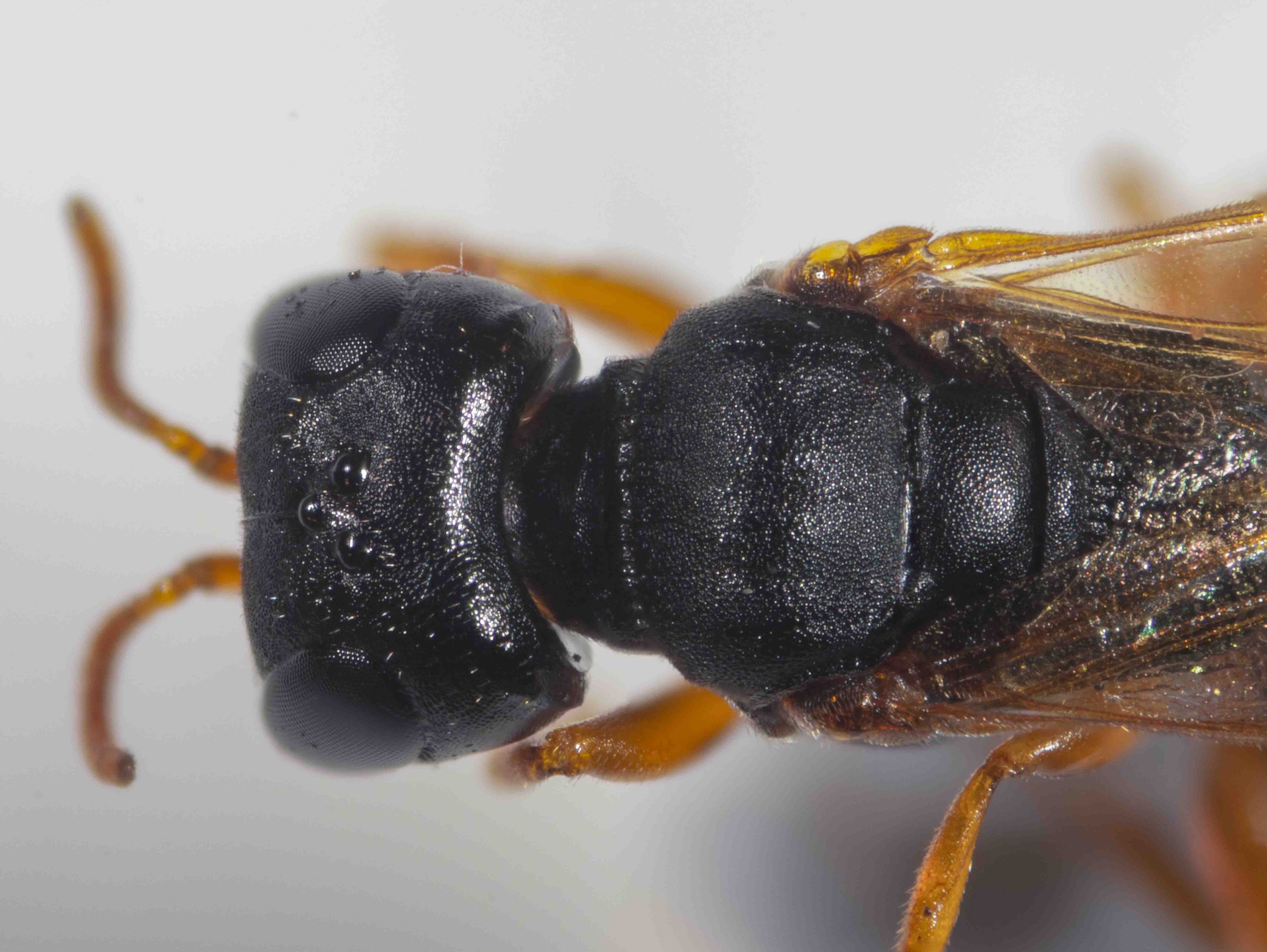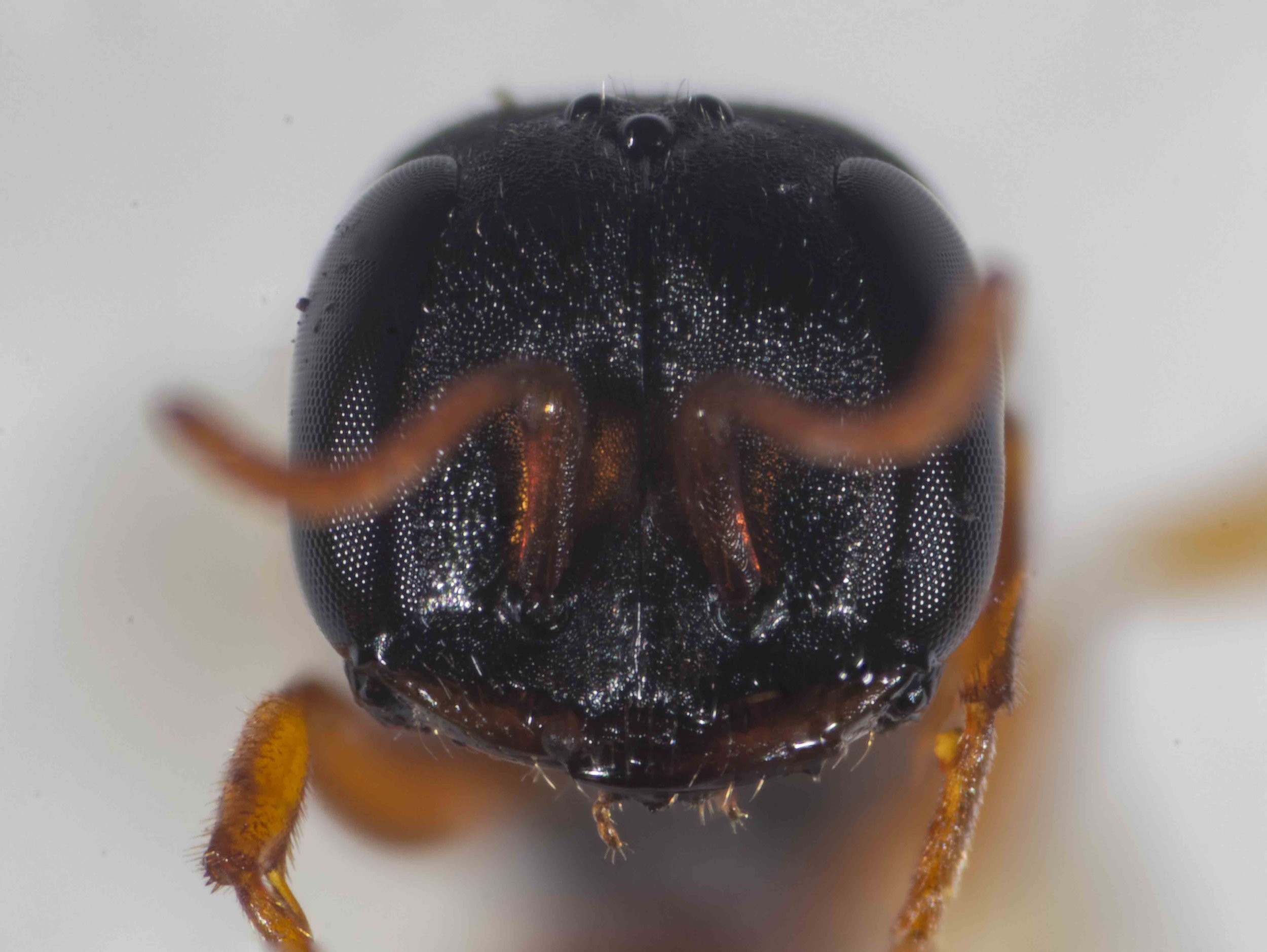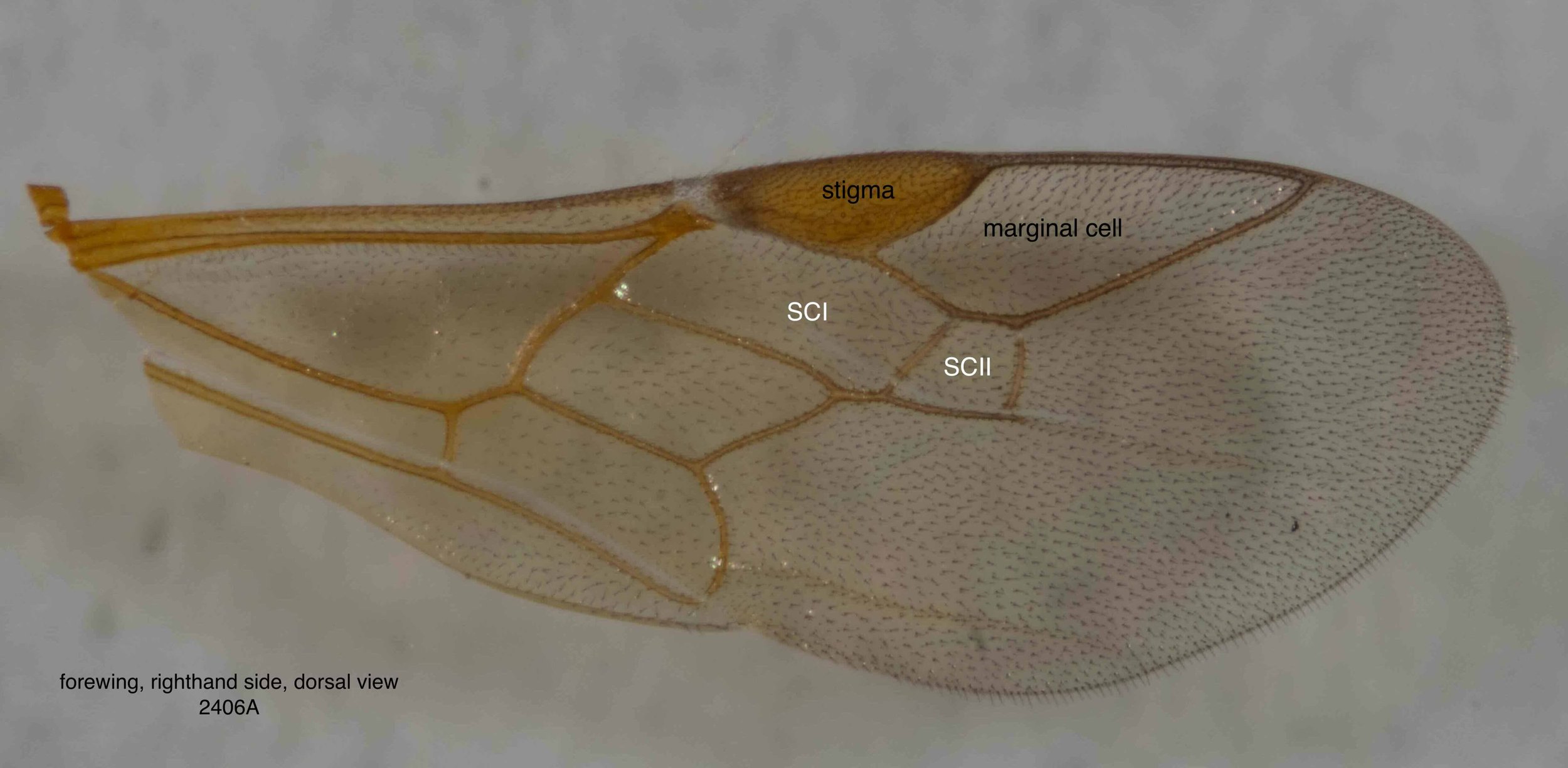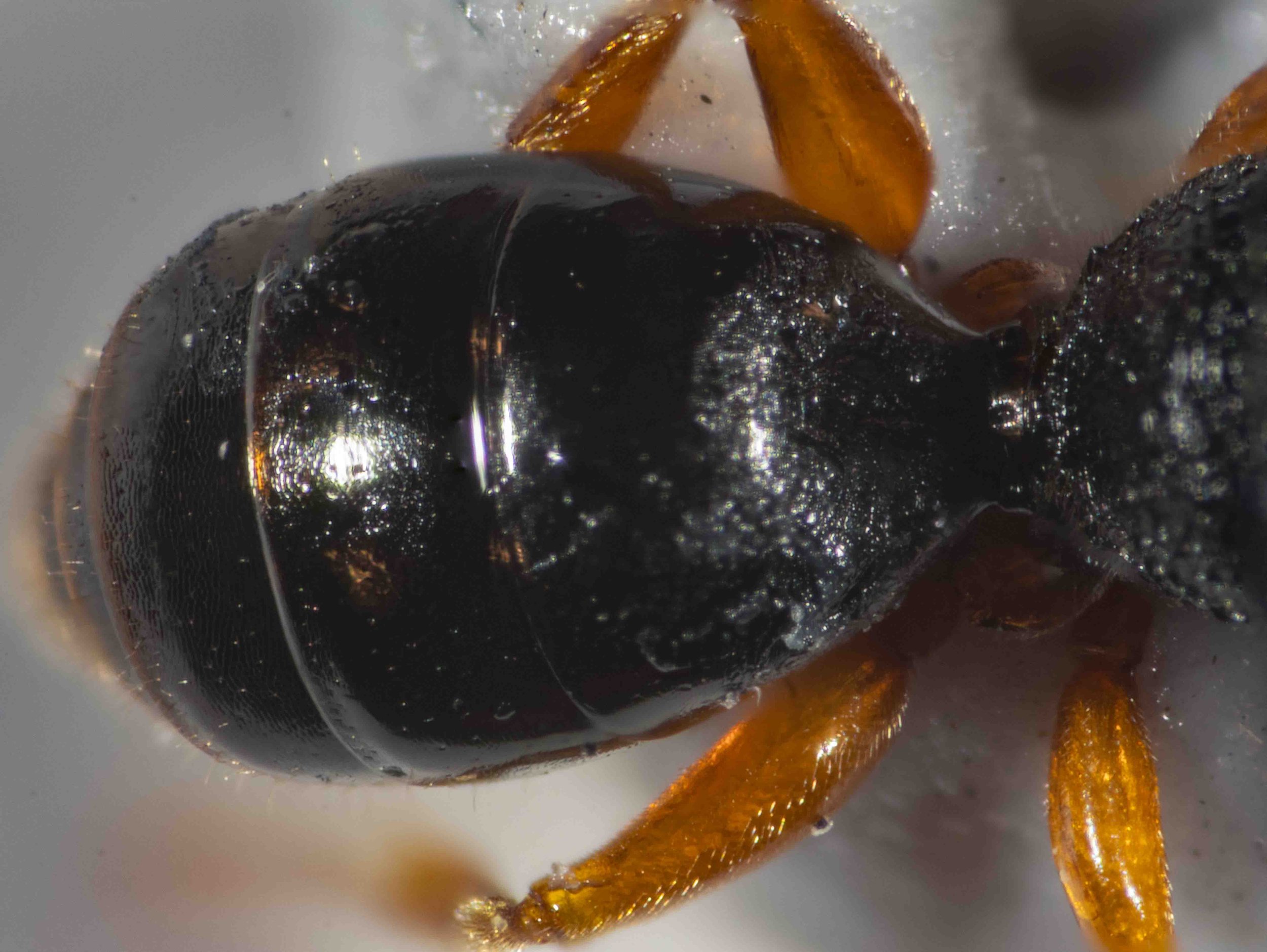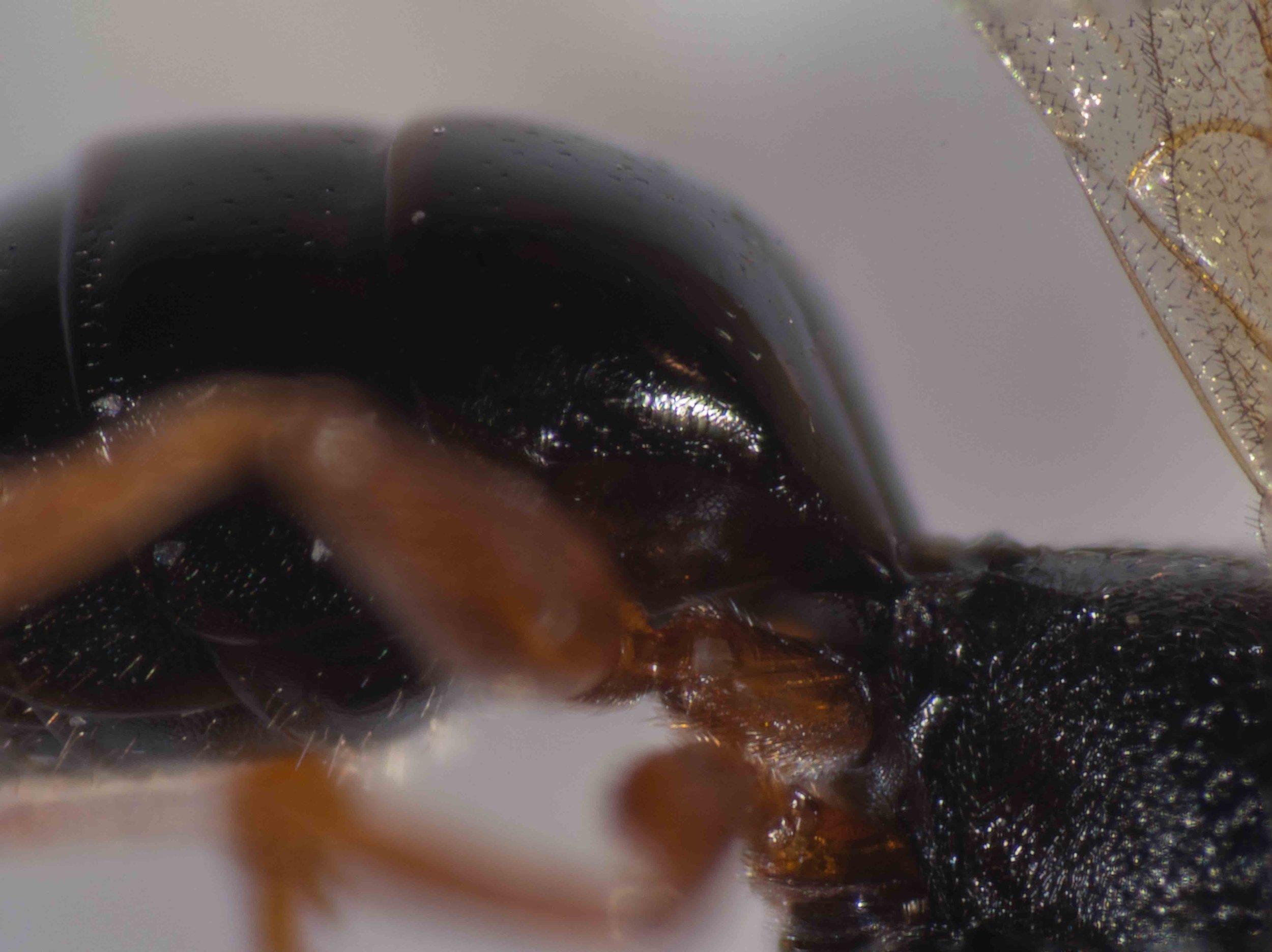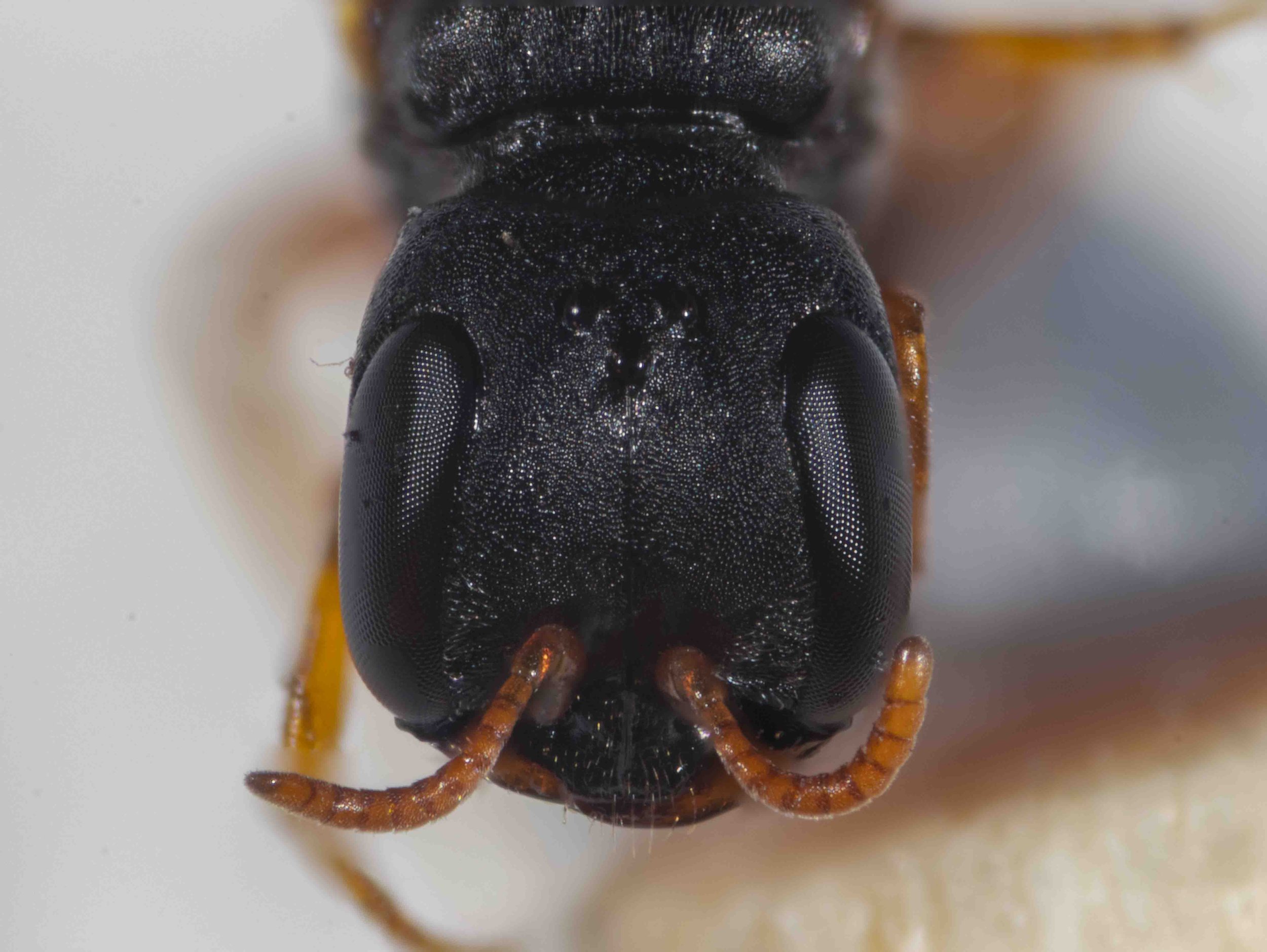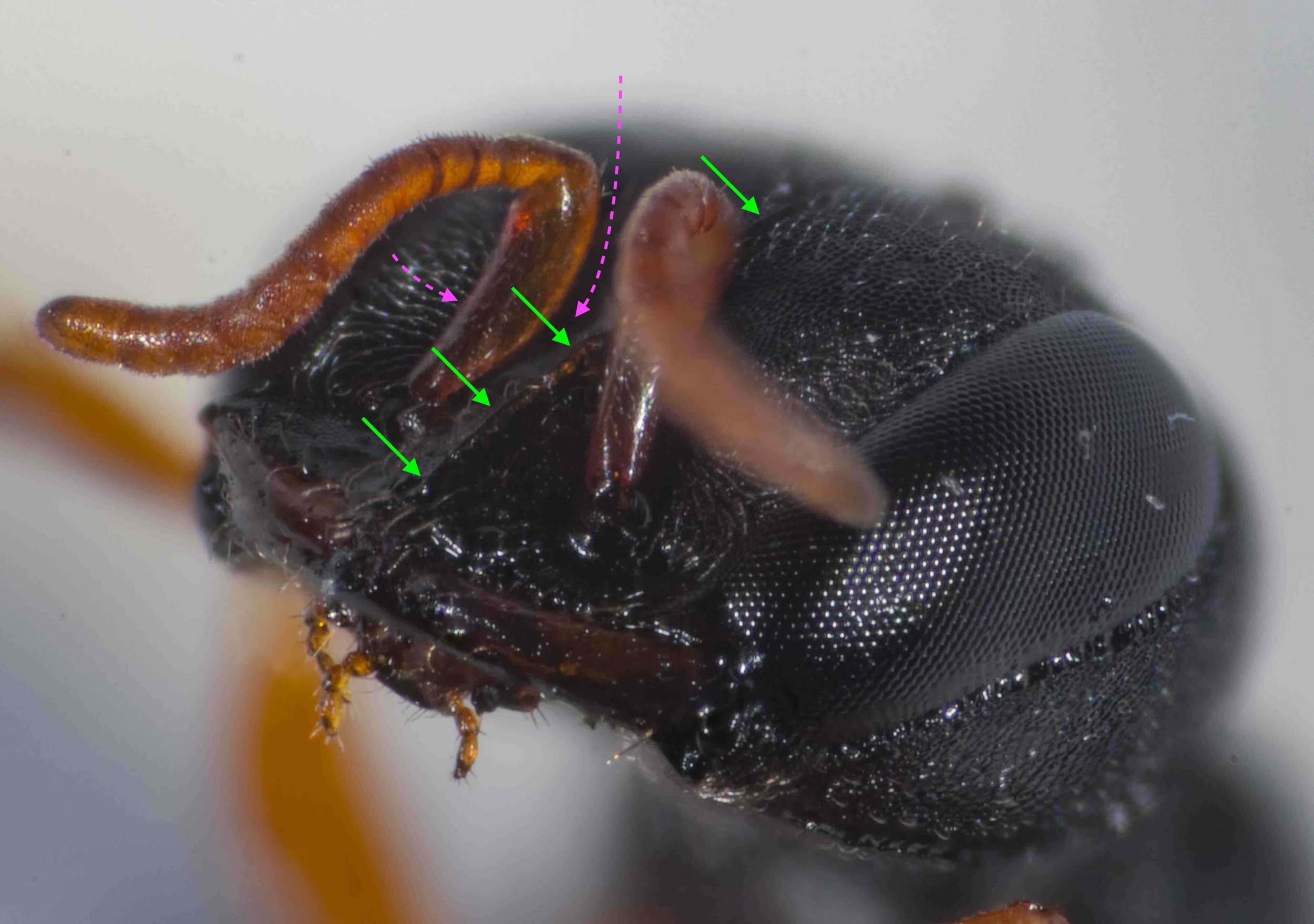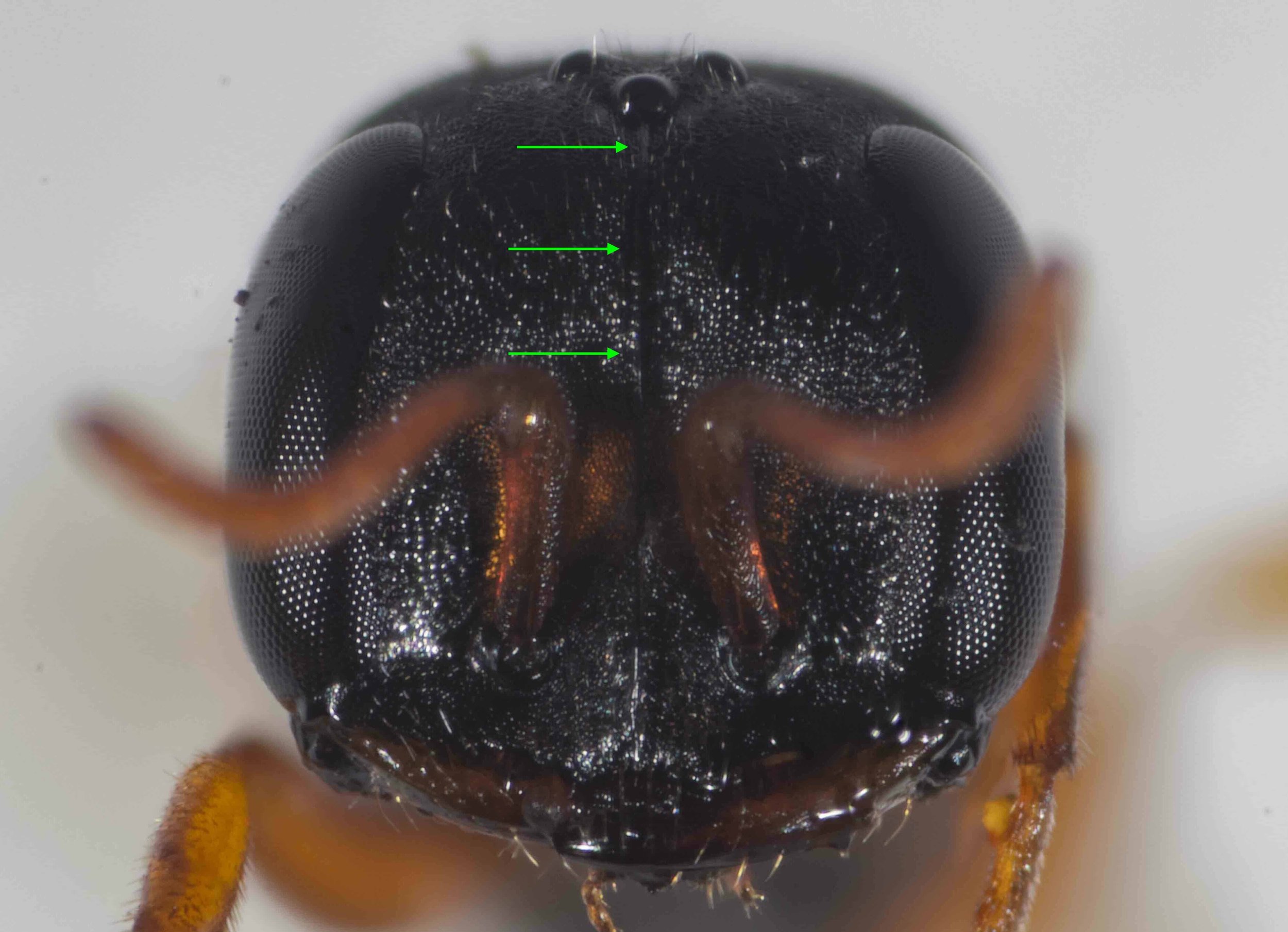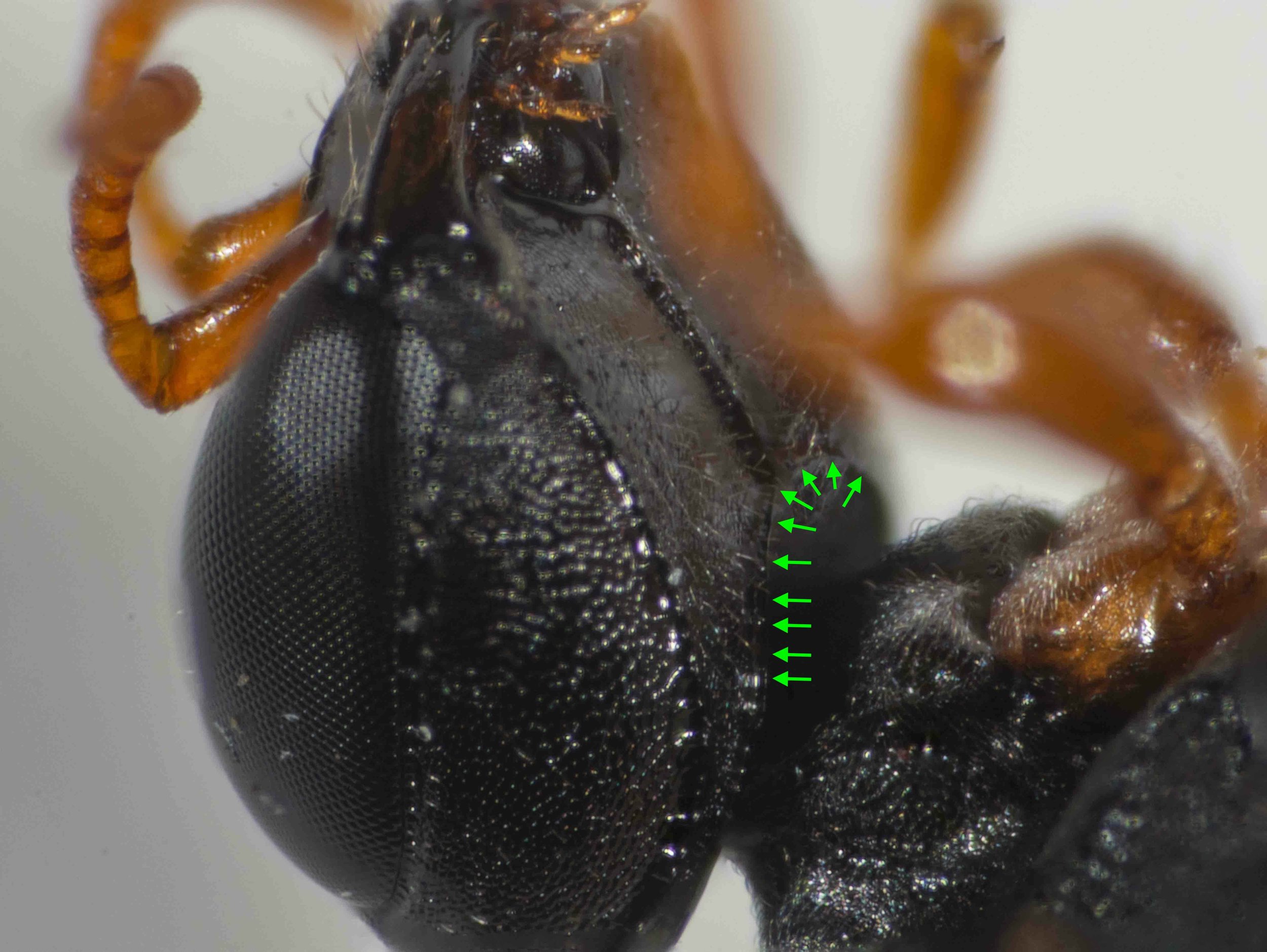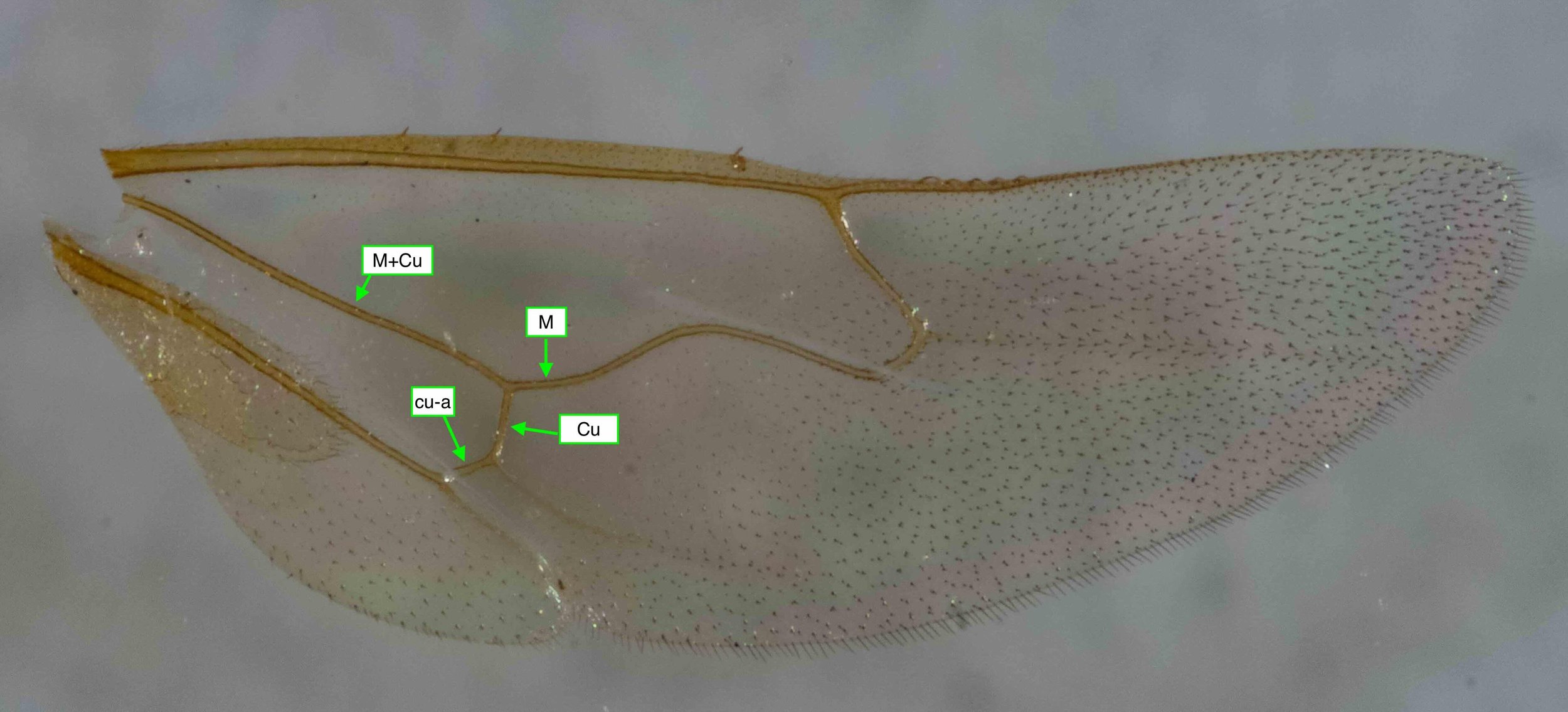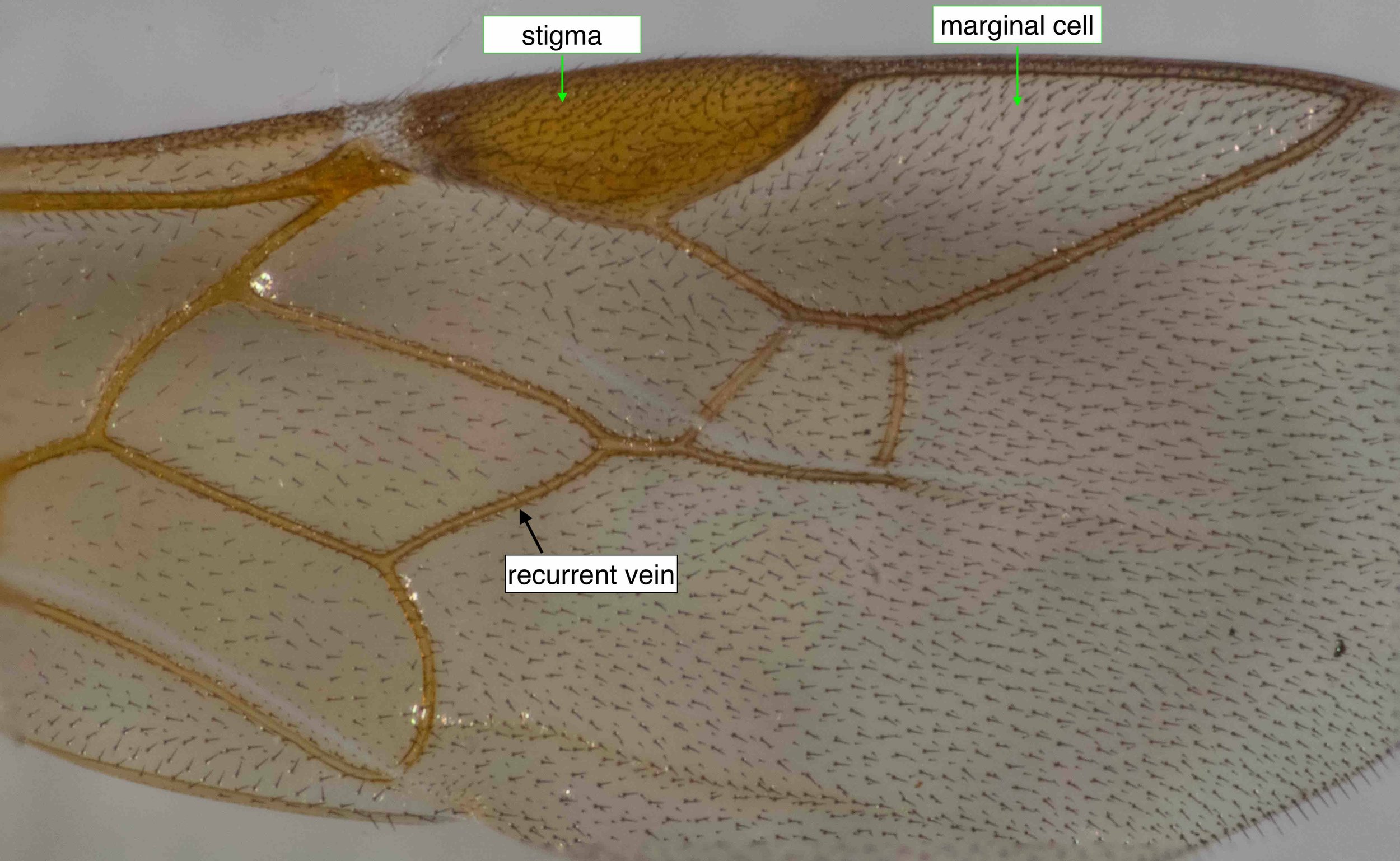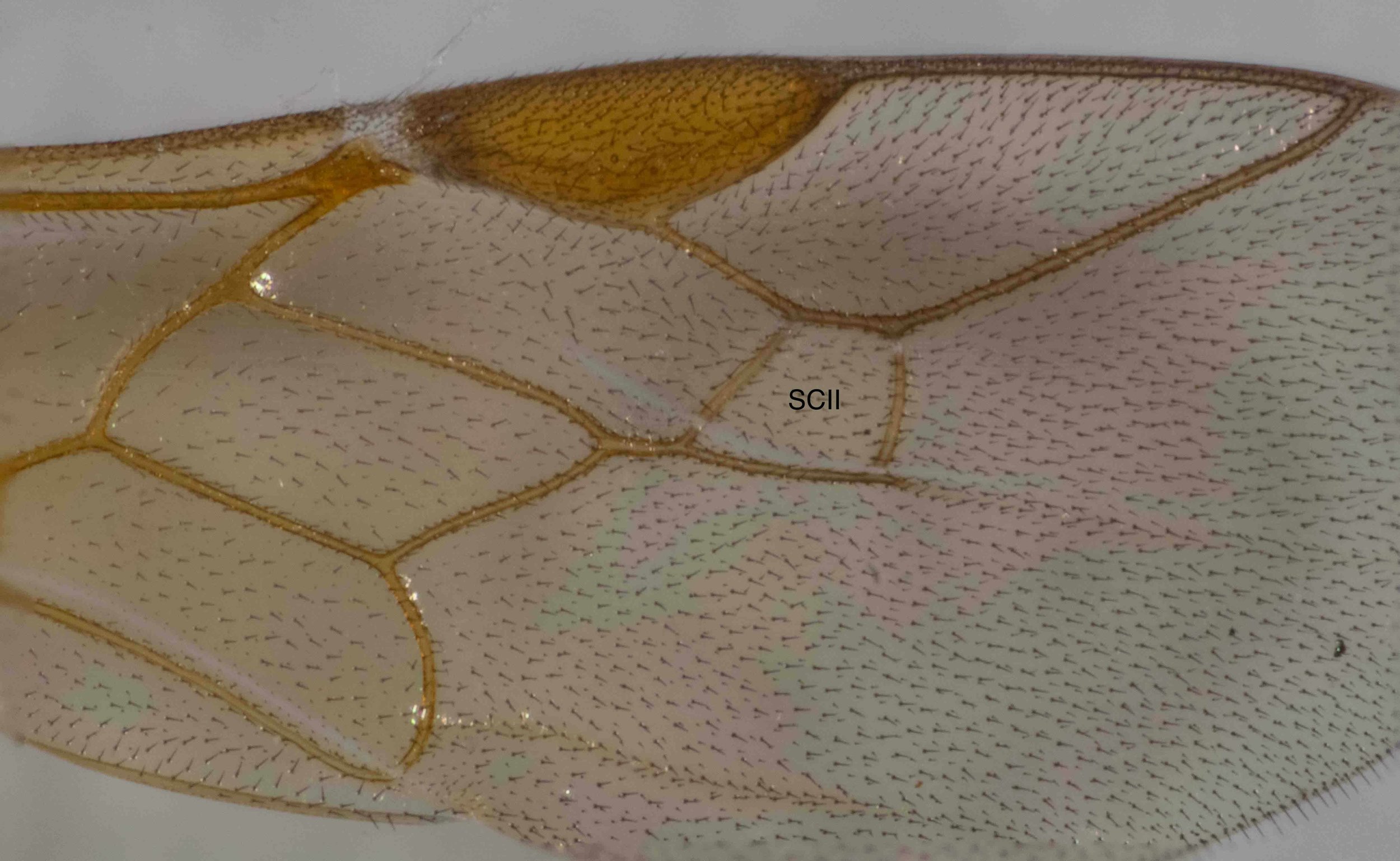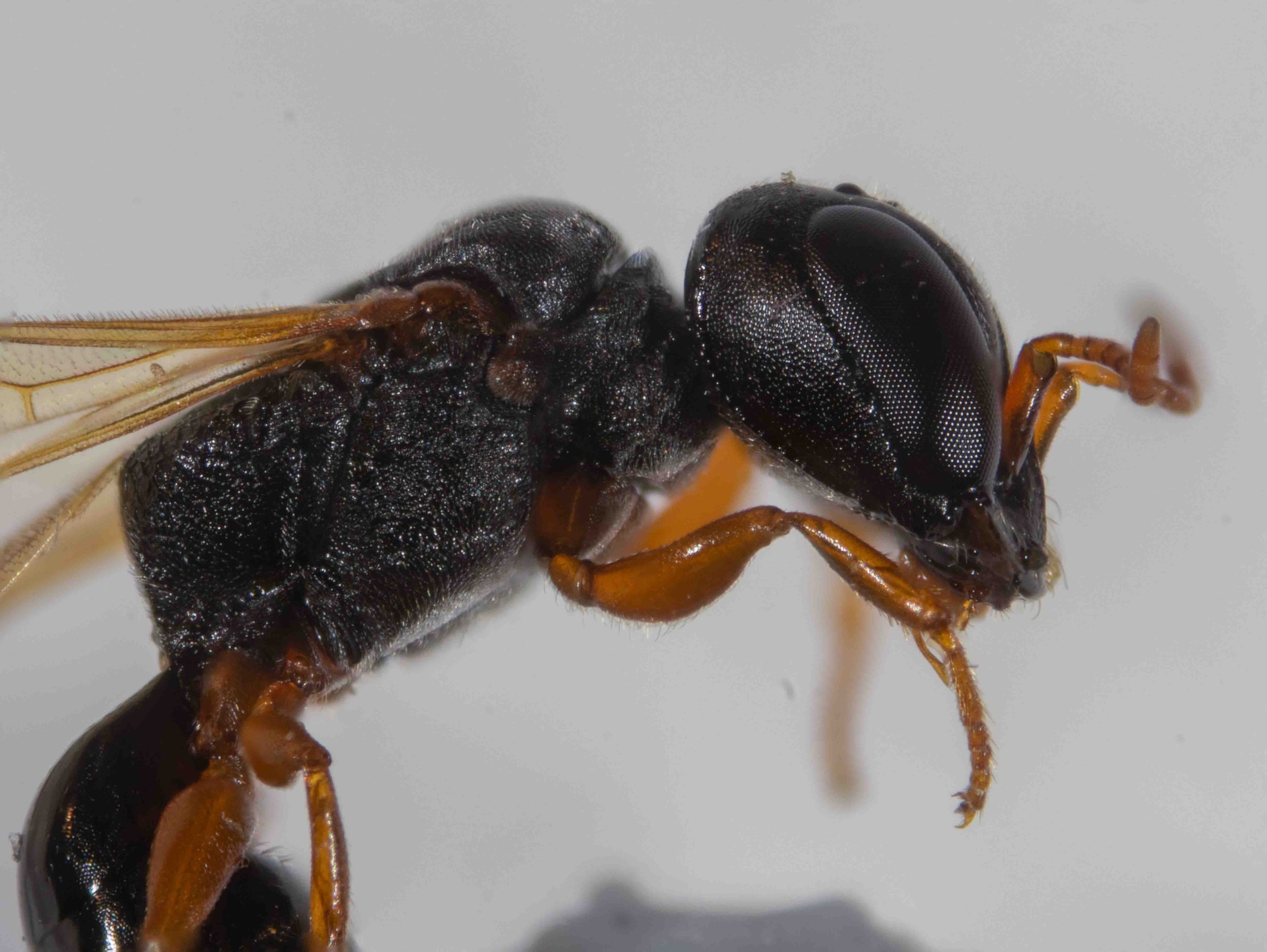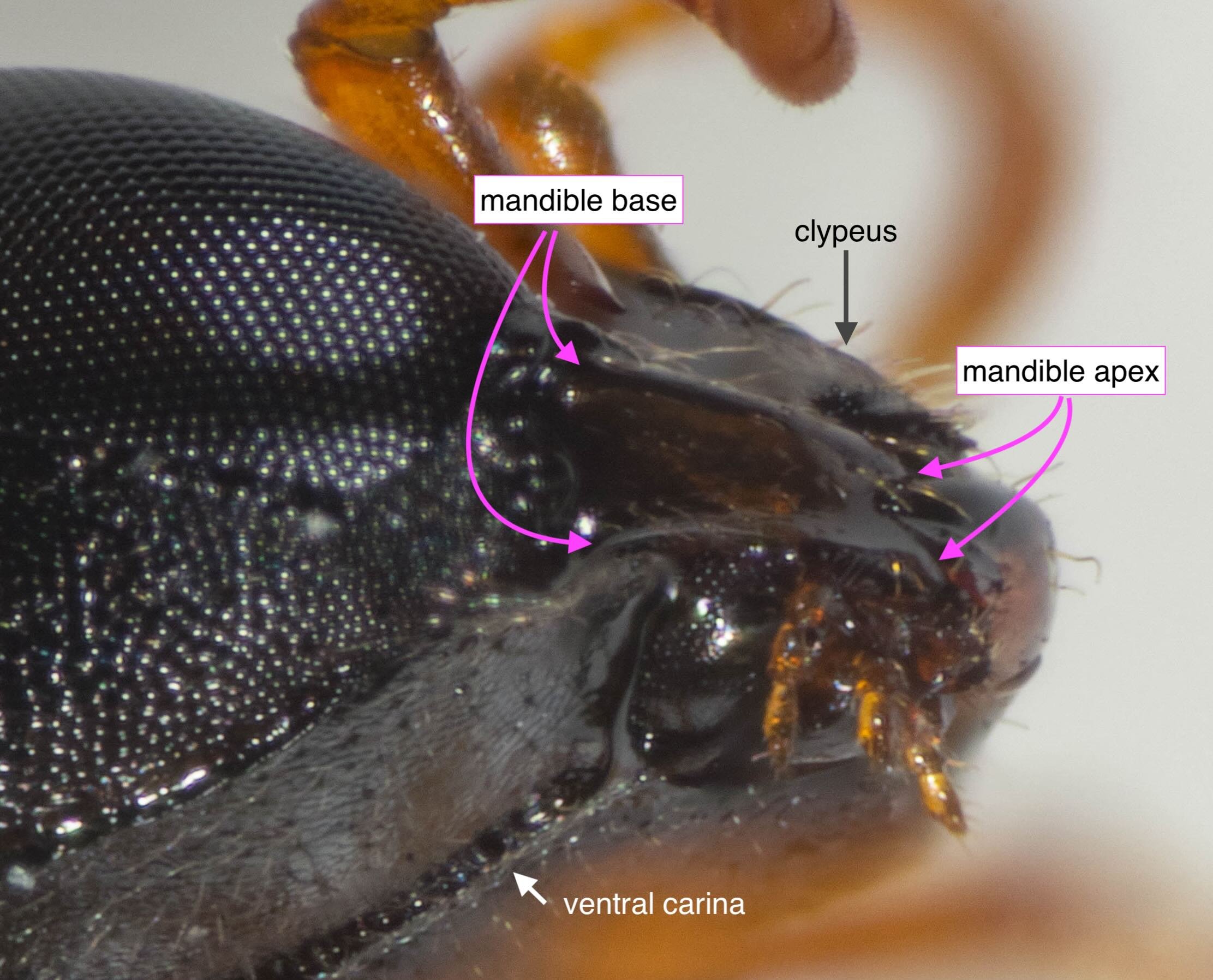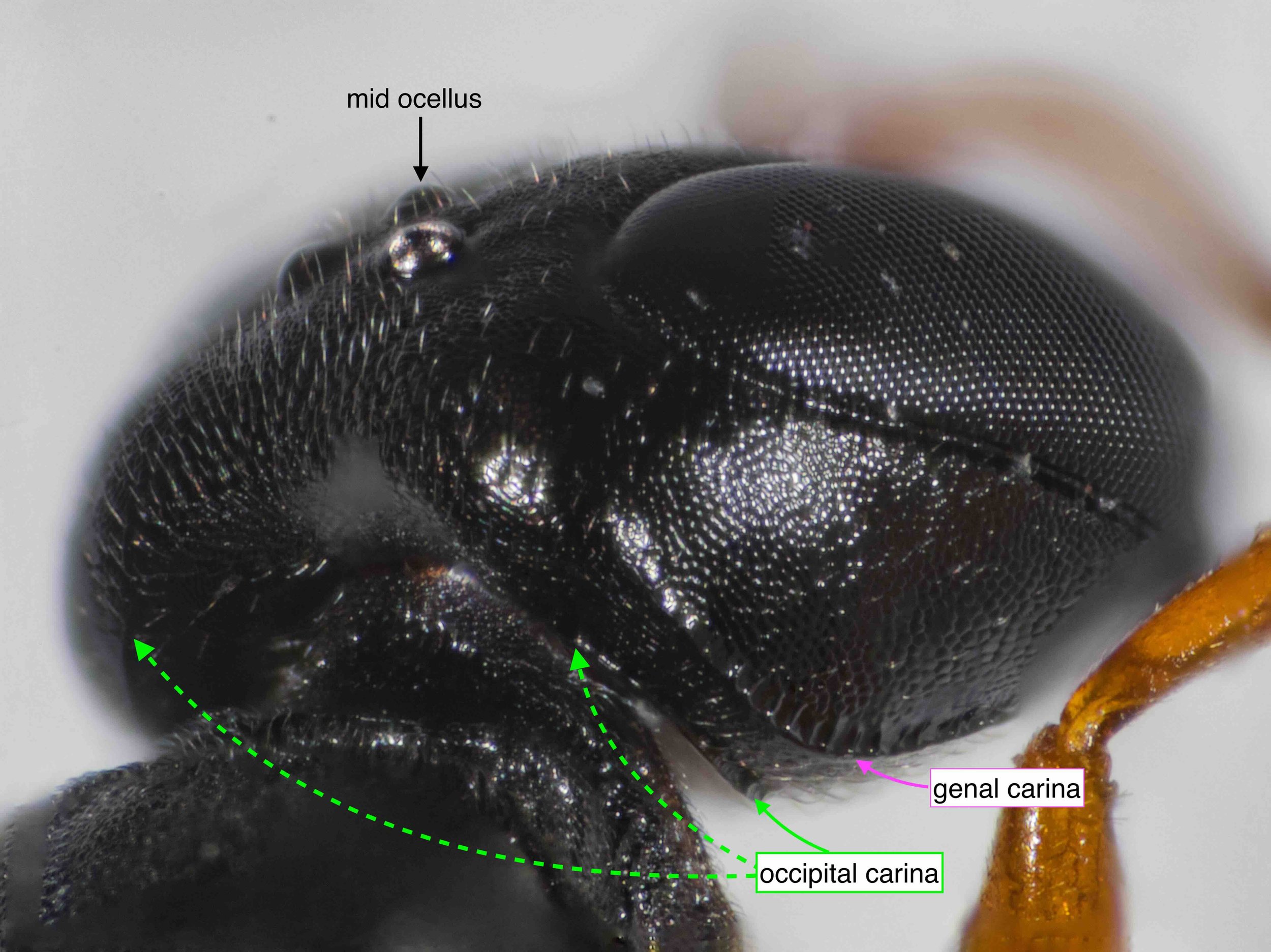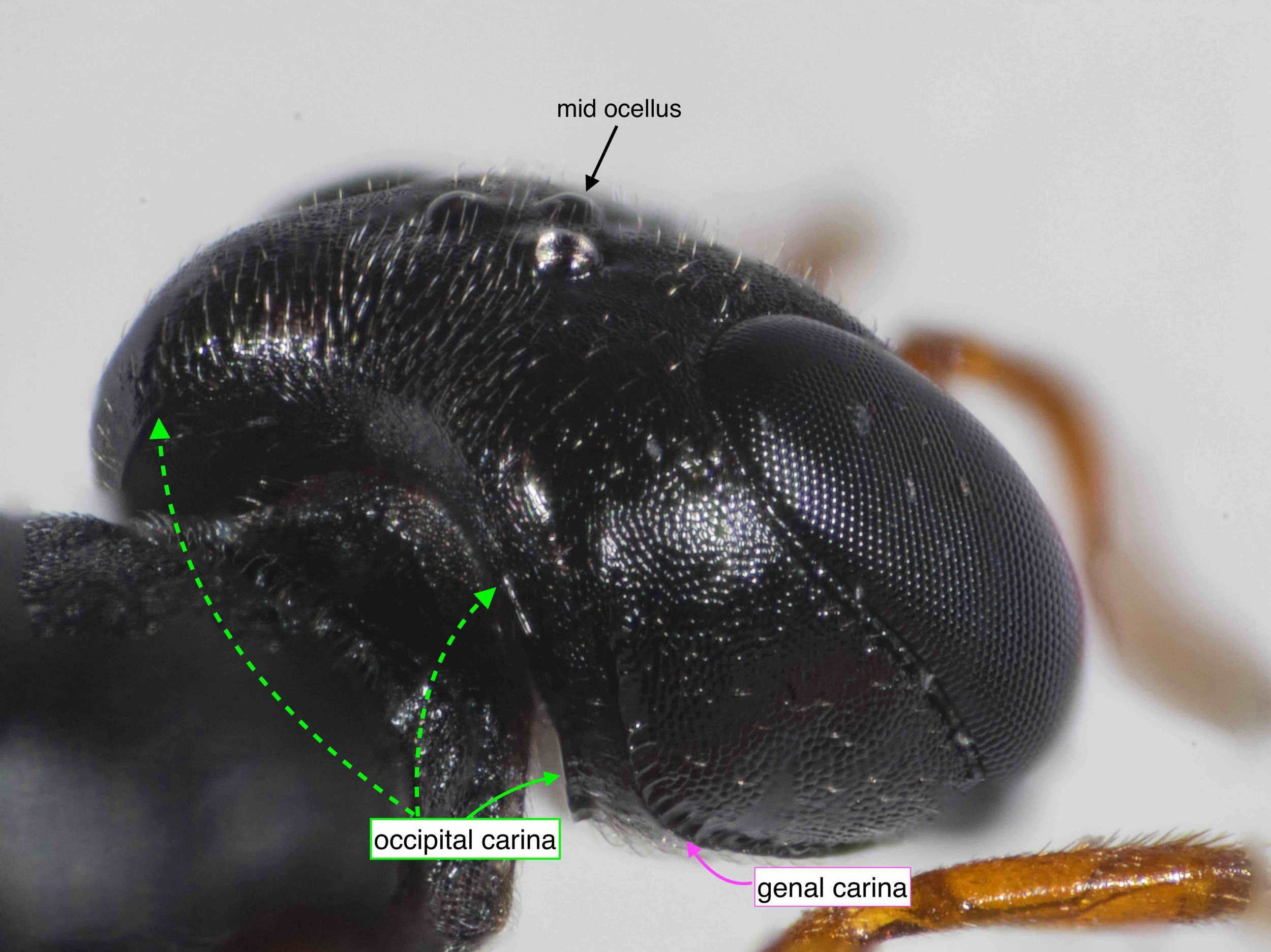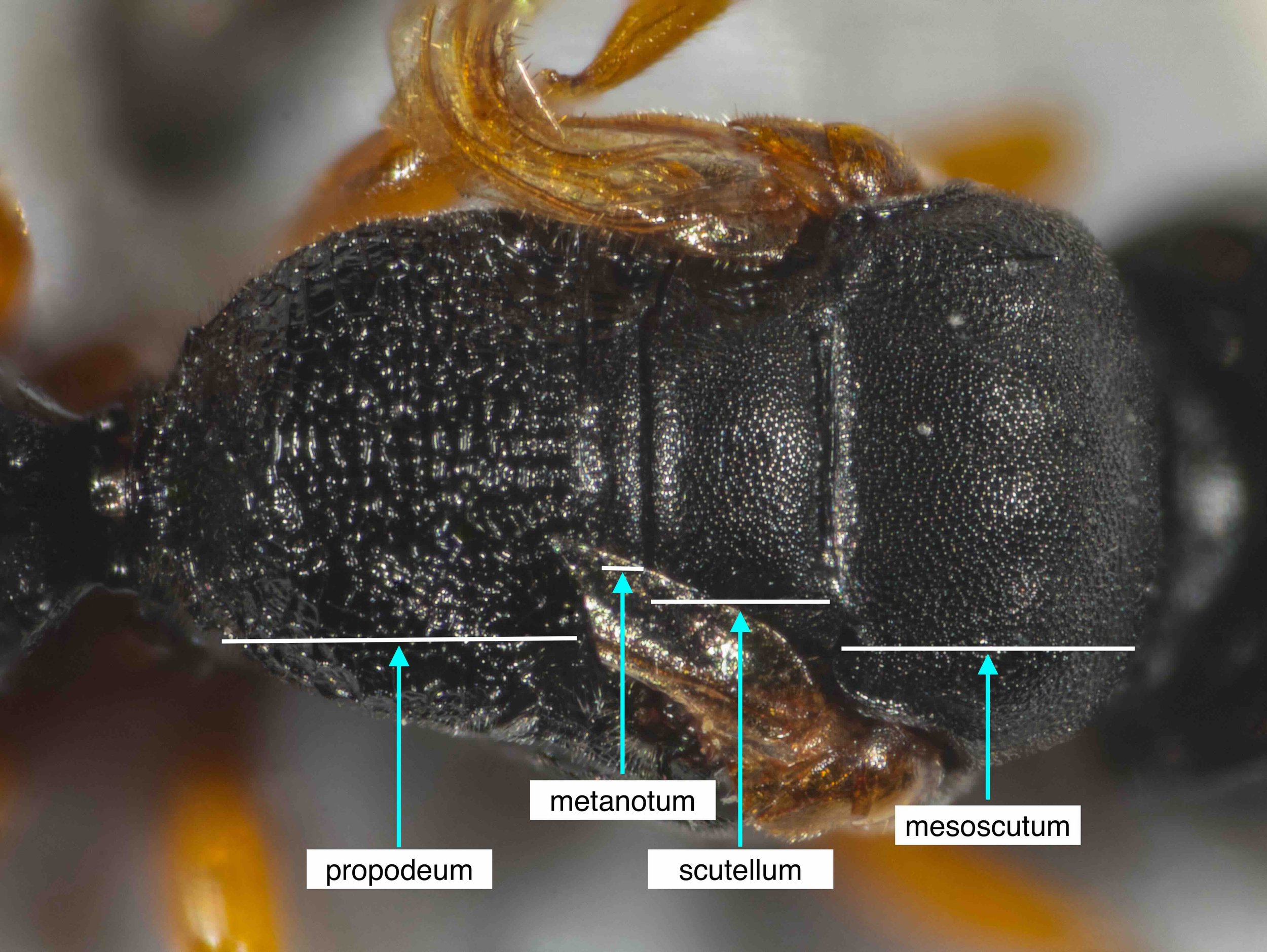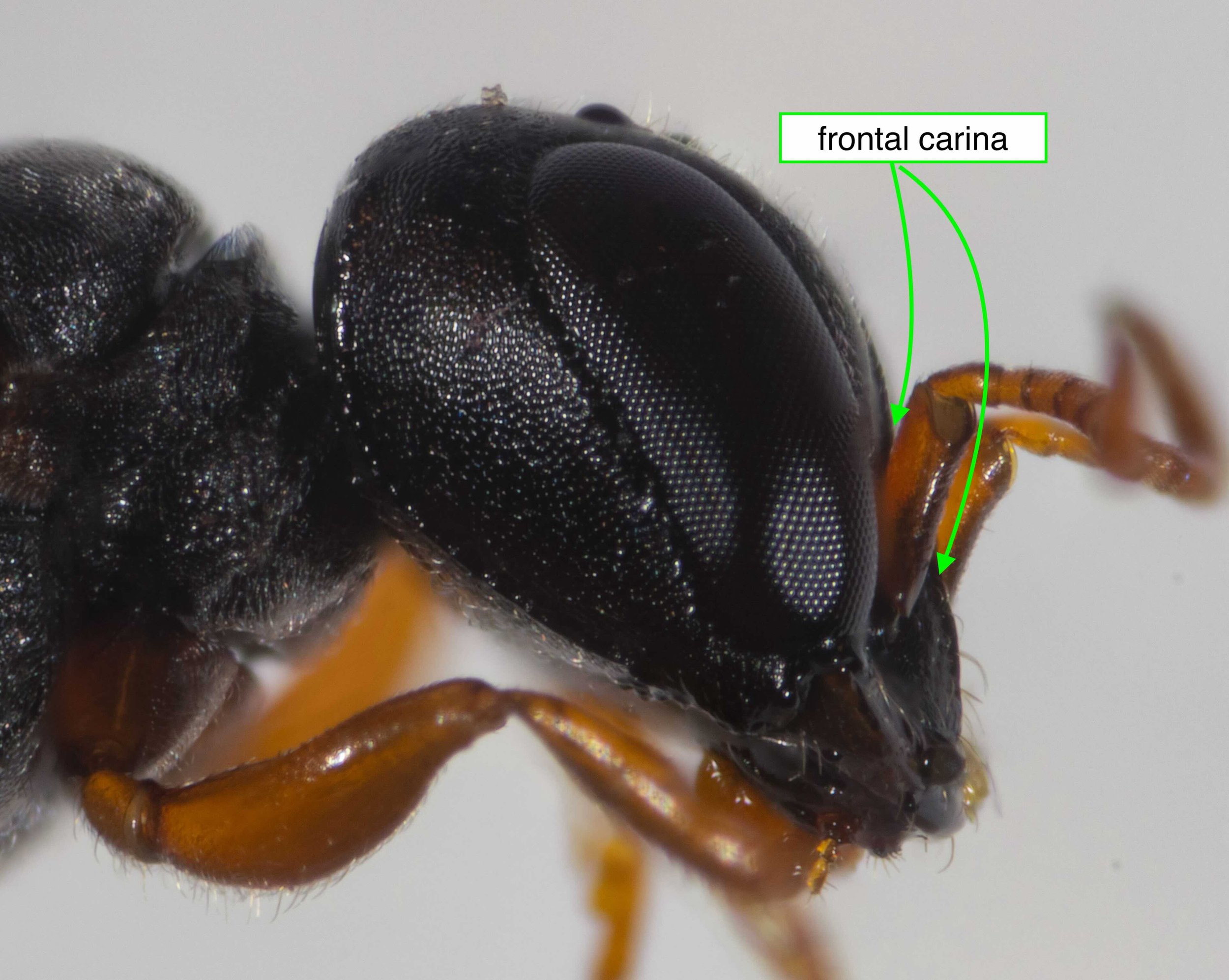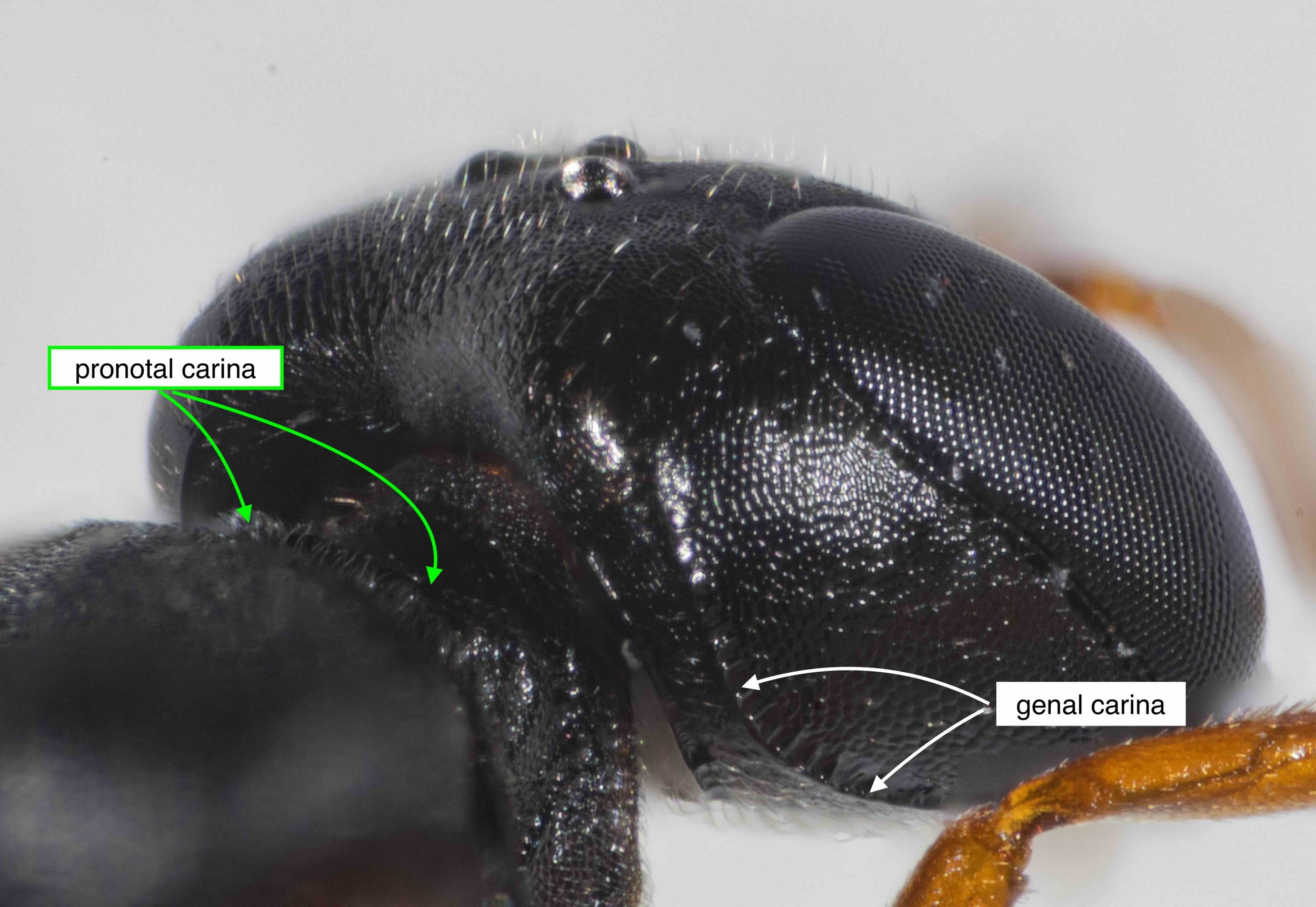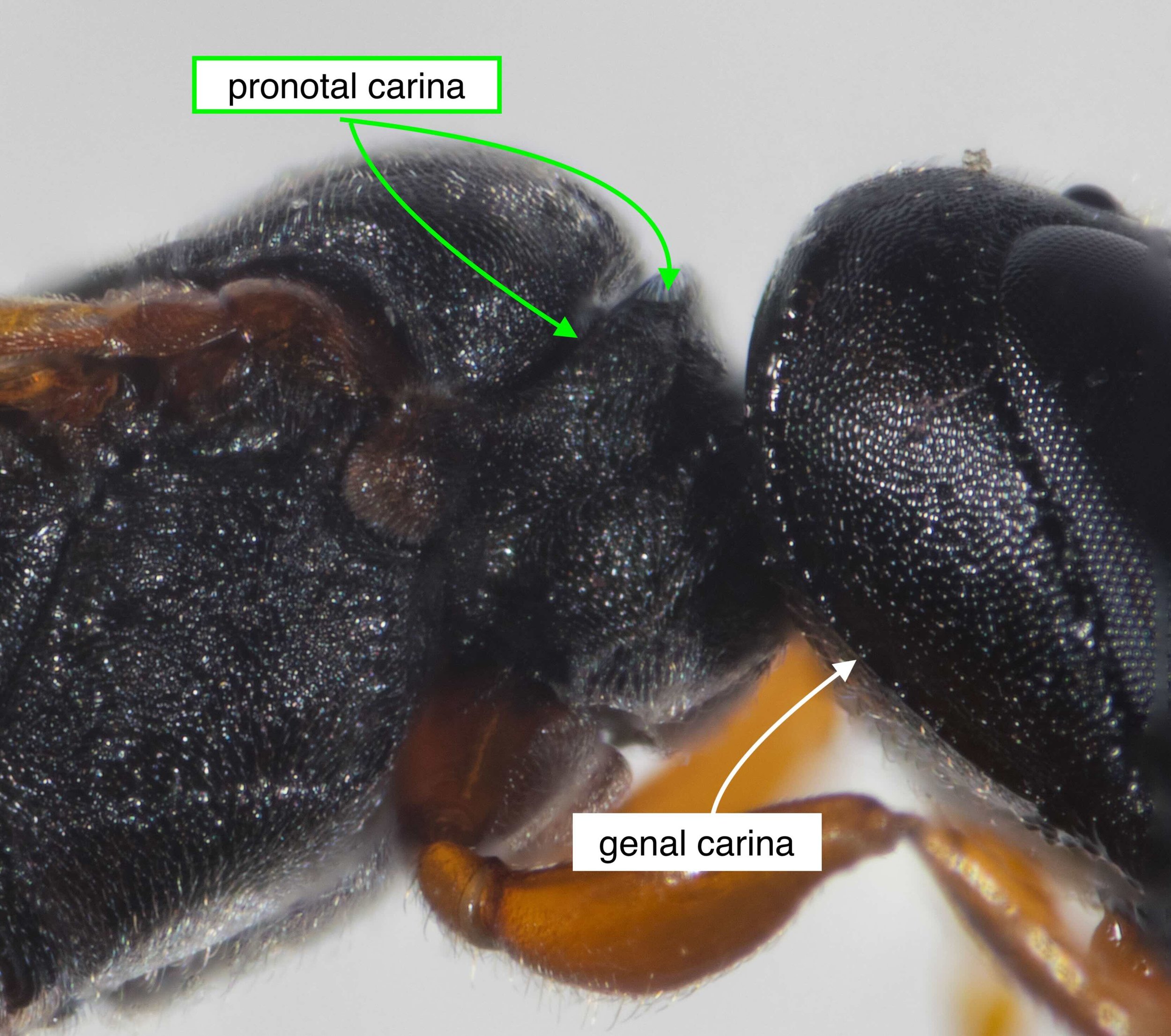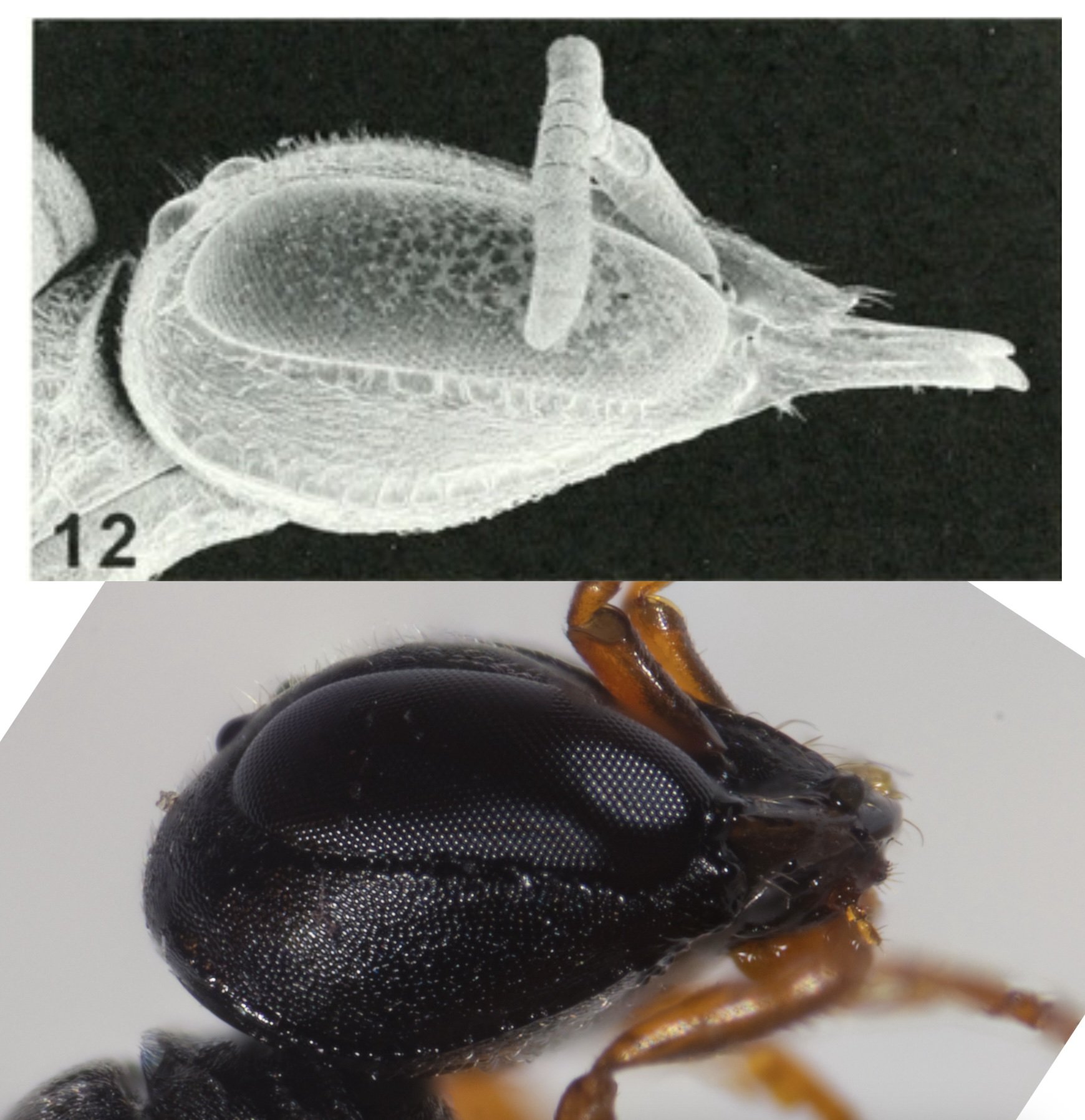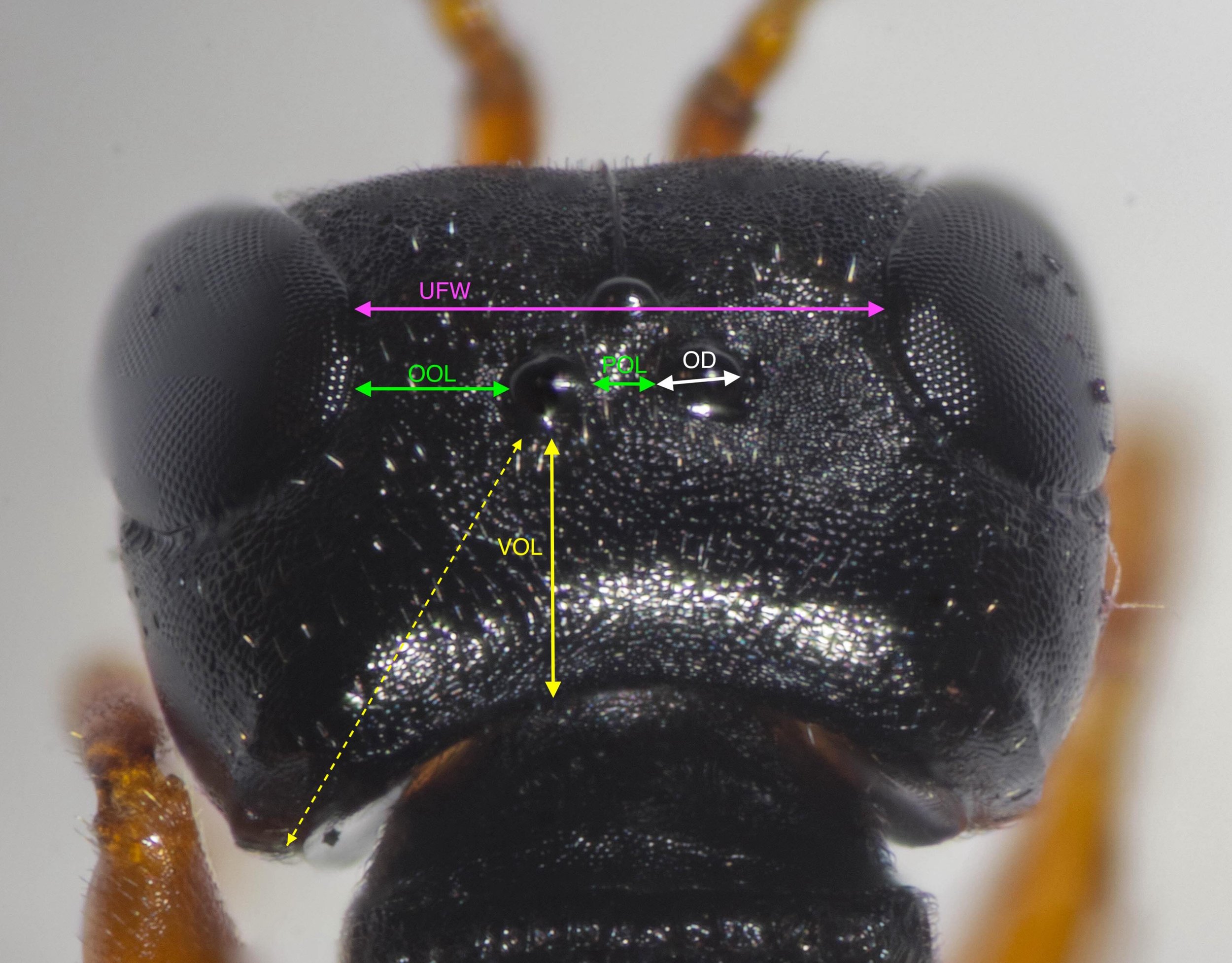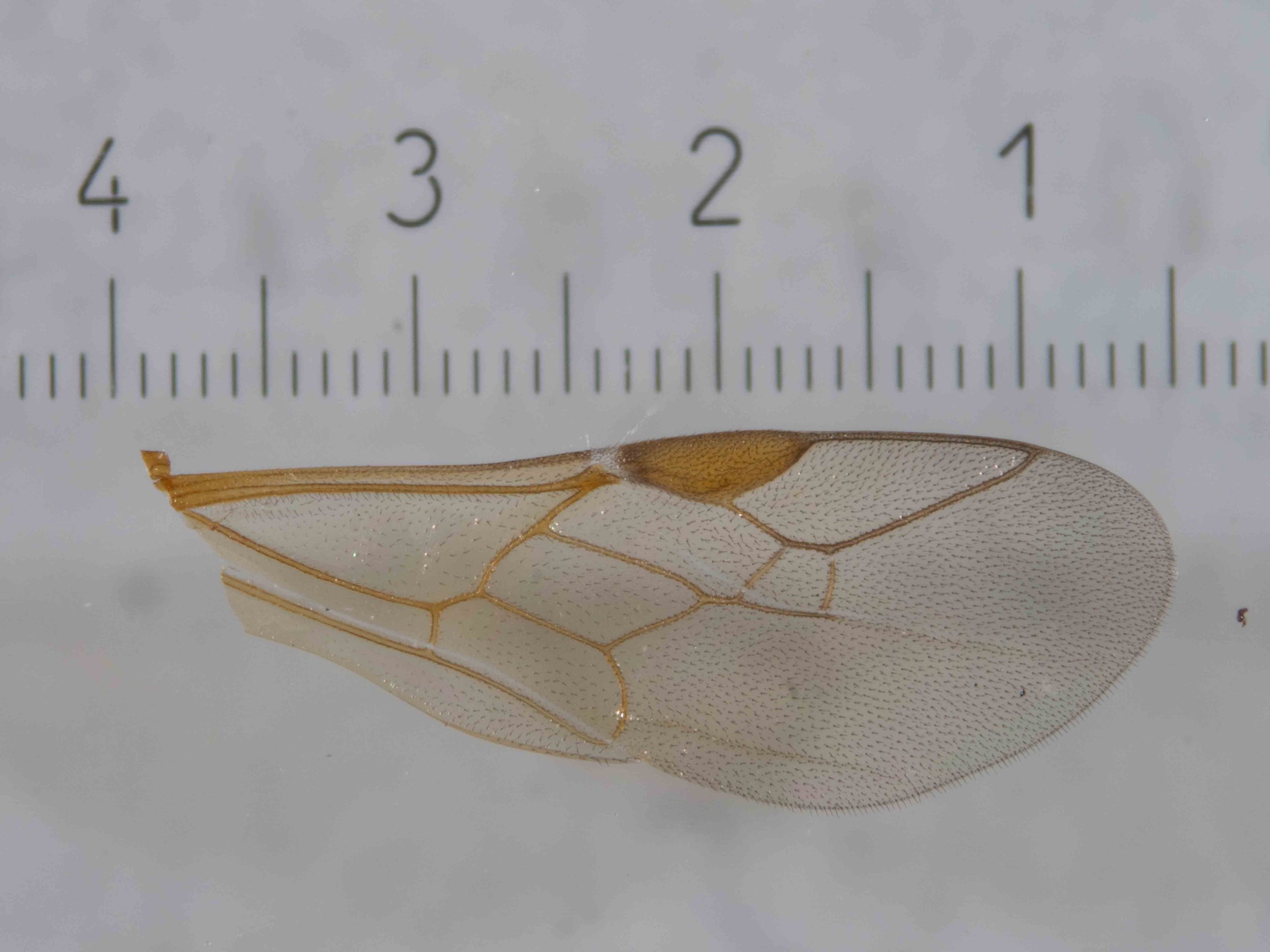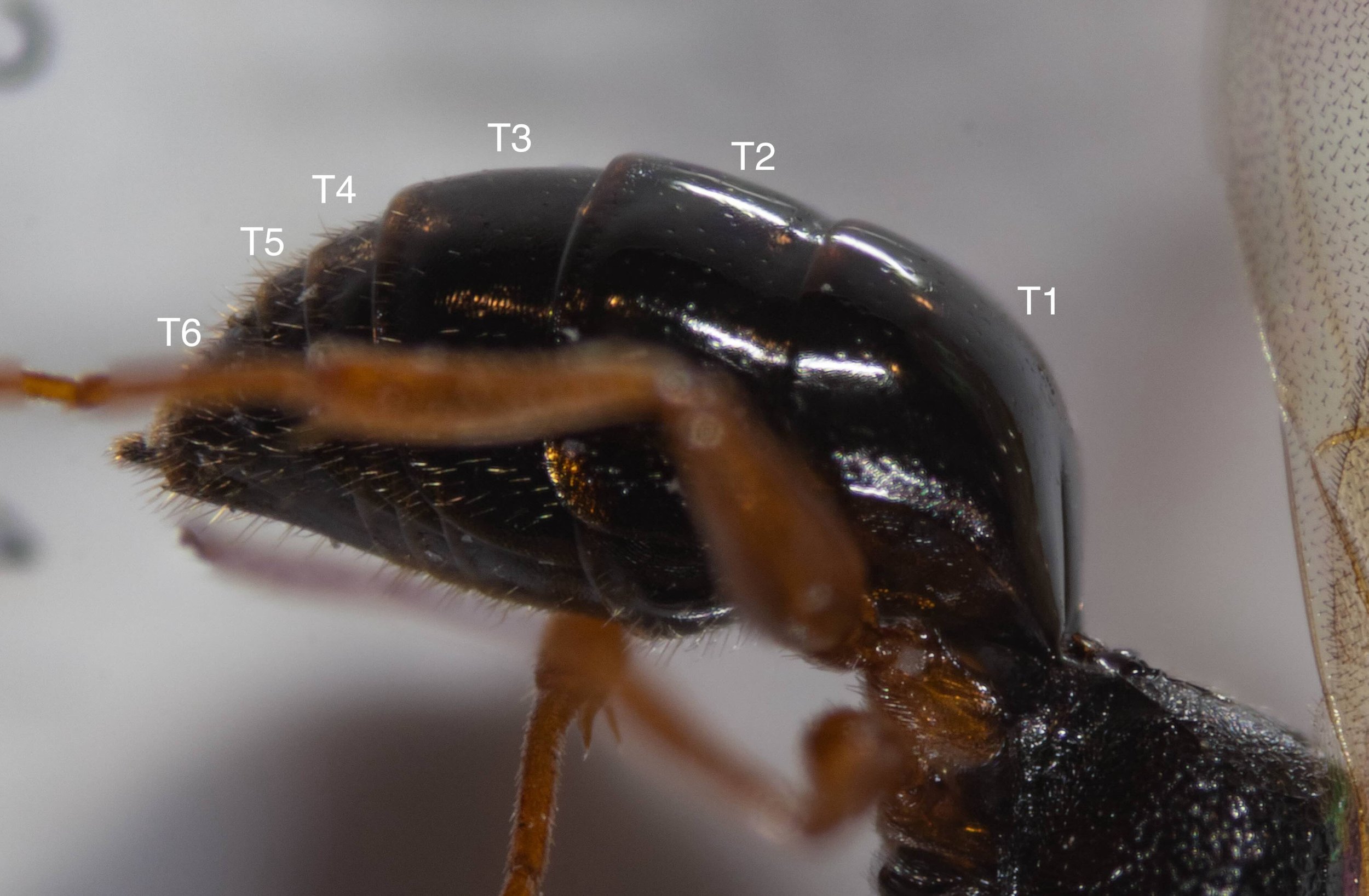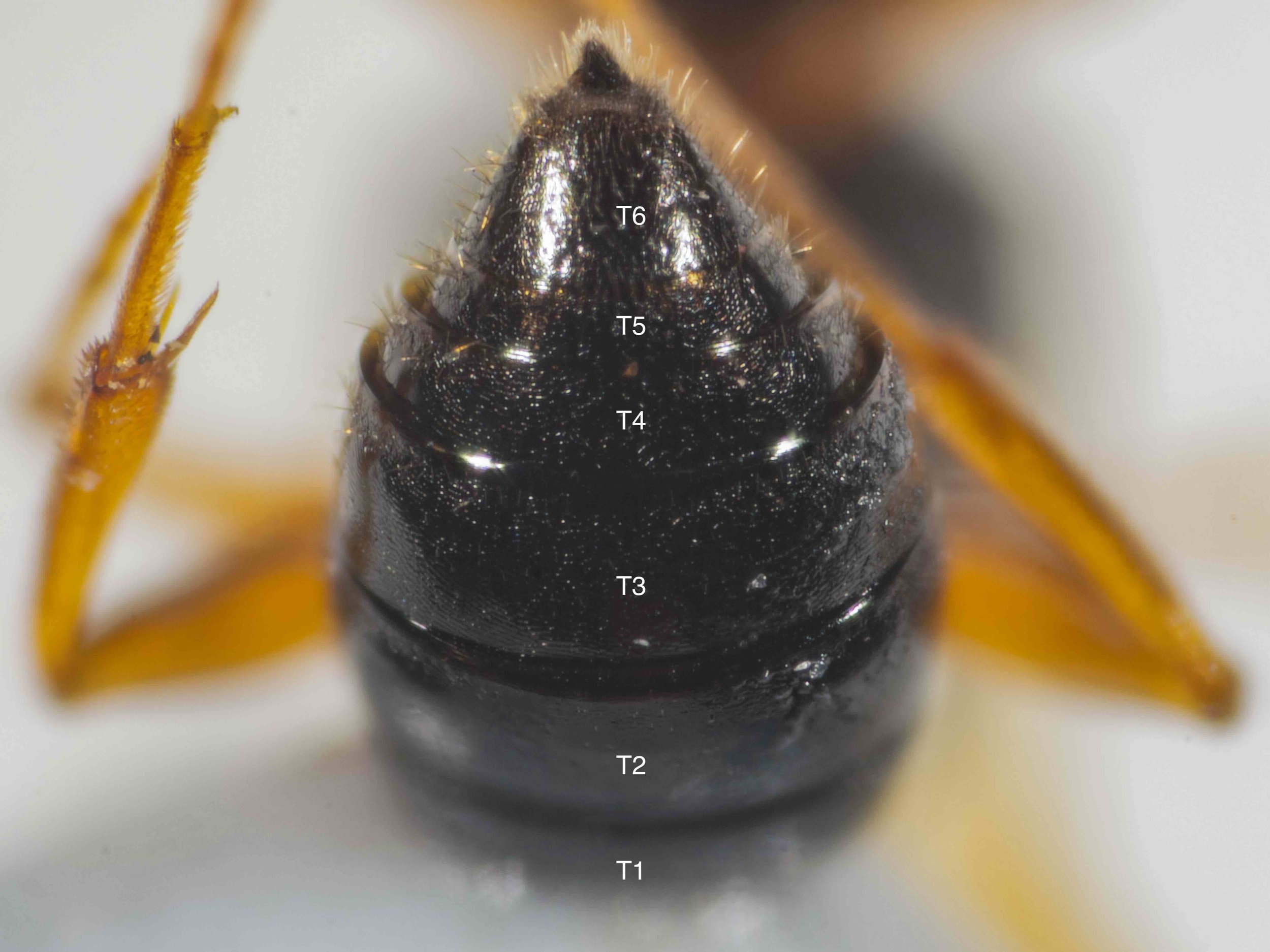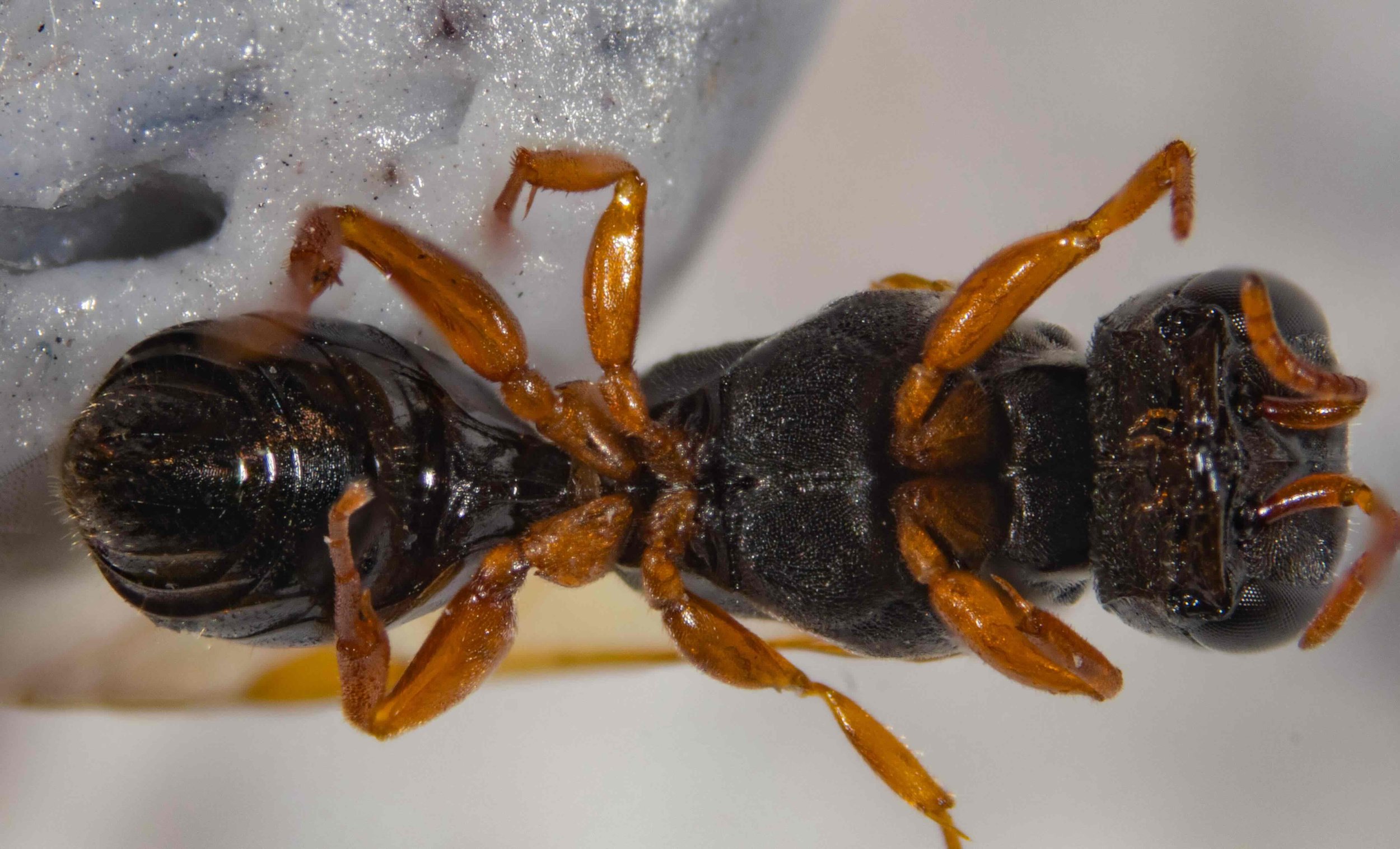Arpactophilus (PEMPHREDONINAE)

Workbook
The discovery of this small crabronid inside the house, during winter, prompted me to familiarise myself with the Pemphredoninae – a crabronid subfamily I’ve not previously tackled.
There are just 7 genera of Pemphredoninae in Australia, and one genus dominates in terms of species diversity – Arpactophilus. After preparing the following summary table and then close examination/imaging of 2406A, I’m convinced she belongs to this genus. I even have a likely species ID – Arpactophilus deakinus.
Resources include:
the Australian Crabronidae summary sheet I developed previously, now updated (see Crabronid Hub)
a new summary sheet, this one for Australian Pemphredoninae (below)
a detailed example of Arpactophilus identification steps
evidence for my conclusion that this wasp is Arpactophilus deakinus
iNaturalist record 224072341
Step 1: subfamily = Pemphredoninae
With reference to features listed in my summary sheet for Crabronidae, I was confident of the subfamily. In particular:
small size
cuboidal head
very short clypeus
eyes entire (not notched), widely separated, and essentially parallel
normal ocelli (so not Larrini)
2 submarginal cells (so not Crabronini & excluding nearly all Miscophini)
Step 2: tribe = Pemphredonini
This is reasonably straightforward, as there are just two tribes currently recognised in Australia: Psenini and Pemphredonini. The Psenini are predominantly northern hemisphere species. Indeed, Australia has just a single genus (Psenulus) with a couple of species. The remaining 40 plus Australian species belong to the Pemphredonini.
The key feature to look for is the forewing venation. Psenini have 3 submarginal cells, while all species in the Pemphredonini have 2 (or rarely just 1). If venation is not visible (e.g. in many field photos), the gaster shape is also indicative … but I’ll come back to that in the summary table below.
Step 3: genus = Arpactophilus
This took a bit of untangling, as there have been significant changes since the work of Bohart & Menke (1976). Groupings into subtribes have changed (Menke 1988, Finnamore 1995), two new genera have been added (Melo & Naumann 1999), and the descriptions of some genera revised (Menke 1988).
I’ve summarised my understanding of the current state of play with regard to Australian species in this subfamily (click image below to open/download pdf).
In conclusion, 2406A matches the description for Arpactophilus. Compare the images above to the features in the summary table. Importantly, I can also confidently exclude the other five genera in this tribe:
Paracrabo is/has: distinctly petiolate; long palpi; stigma with a micropore field
Allostigmus is/has: distinctly petiolate; narrow gena; dense silvery pubesence covering the clypeus; the vertex declivitous immediately behind the ocelli; a broad pygidial plate
Ceratostigmus is/has: a short, square petiole; a weakly concave lower frons without scapal basins; no paraocular sulcus; no interantennal ridge
Spilomena is/has: short frontal carina, not reaching 1/2 was to mid ocellus; no occipital carina; vein cu-a straight & not appendiculate
Polemistus is/has: a short petiole; eyes converging strongly below; forewing with 3 discoidal cells & 2 recurrent veins; stigma small-moderate
Step 4: keys out to Arpactophilus deakinus
There are currently 22 described species of Arpactophilus in Australia, and it has been suggested that there are perhaps 60 species represented in collections (Matthews & Naumann 2002). So it’s possible – perhaps even probable – that 2406A is an undescribed species.
The first step, however, is to see if it is a good fit for any of the 22 described species. Fortunately, there is a key (Matthews & Naumann, 2002)!
The key is for females … and fortunately, 2406A is a female.
In a further stroke of good luck (for me), species tend to vary in rather obvious ways. It rarely comes down to subtle or hidden differences, such as the arrangement of hairs, shape of the labrum, or hidden details of genitalia. To illustrate, a 2016 study of the genus in New Caledonia (Breitkreuz et al. 2016) includes excellent colour images of more than 30 species of Arpactophilus, showing obvious variation in such features as: head shape, size and extend of carinae; eye shape; body colour; and propodeal shape and sculpturing.
So. stepping through the key:
But what about A. dubious?
The only step of the key at which I was left a little unsure was Step 19. In 2406A the frontal carina does form a narrow, somewhat translucent keel between the antennae. So might she actually be A. dubious?
The species description for A. dubious (Turner 1916) quite clearly excludes it.
For example:
mesonotum rugulose, scutellum smooth
SCII (Turner’s ‘second cubital cell’) very small
carinae round the eyes strongly developed
propodeal enclosure well defined
POL about equal to OOL (in 2406A, OOL >> POL)
extract Turner 1916 (p. 131)
Step 5: matches the species description for Arpactophilus deakinus
The final test is comparison with the full species description (Matthews & Naumann 2002), not simply the key.
Original description of Arpactophilus deakinus, extracted from: Matthews, R.W. & Naumann, I.D. 2002. Descriptions and biology of nine new species of Arpactophilus (Hymenoptera: Crabronidae), with a key to described Australian species. Journal of Hymenopteran Research 11(1): 101-133 (from pp. 104-8)
Many of the characters described by Matthews & Naumann (2002) are visible in my earlier images, while several others I have detailed in the gallery below.
Note that some features I can’t clearly see, such as the shape of the labrum or mandible tips. Also, the images in their paper are SEMs, showing a level of microsculpture detail I can’t hope to capture with our light micro/macro setup.
In conclusion:
In nearly every feature, it’s a match! There are just a couple of characters that differ, and these only slightly.
head shape (see additional images below): in their Figures 11-12, the ocelli appear closer to the back of the head than they do in my images. However, when I compare their relevant measurements – especially VOL – any discrepancy is in the other direction (i.e. 2406A has a short extent behind the ocelli). I conclude that comparison of images can be misleading, especially when the head is tilted at a different angle in each case. And fine-scale measurements can vary between individuals within a species. Their paper reports only measurements of the holotype (and an image of a paratype). Importantly, their written description of the head accords with 2406A … “Globular, without long post-ocellar area.”
colour of coxae: this is such a minor difference that it is probably individual variation. Colour in wasps is rarely completely uniform in every aspect.
For what it’s worth, location is also a match. The types were collected in Canberra, just 200km NNW from here. We certainly share many other crabronid species with Canberra, including some of my familiar favourites Cerceris antipodes , Austrogorytes bellicosus and Rhopalum variitarse.
References
Bohart, R.M. & Menke, A.S. 1976. Sphecid Wasps of the World: A generic revision. University of California Press.
Breitkreuz, L.C.V., Ohl, M. & Engel, M.S. 2016. A review of the New Caledonian Arpactophilus (Hymenoptera: Crabronidae). Zootaxa 4063(1): 001-066 (available from authors’ ResearchGate page)
Eady, R.D. 1968. Some illustrations of microsculpture in the Hymenoptera. Proceedings of the Royal Society of London. Series A, General Entomology. https://doi.org/10.1111/j.1365-3032.1968.tb01029.x
Finnamore, A.T. 1995. Revision of the world genera of the subtribe Stigmina (Hymenoptera: Apoidea: Sphecidae: Pemphredoninae), Part 1. Journal of Hymenopteran Research 4: 204-284
Matthews, R.W. & Naumann, I.D. 2002. Descriptions and biology of nine new species of Arpactophilus (Hymenoptera: Crabronidae), with a key to described Australian species. Journal of Hymenopteran Research 11(1): 101-133 freely available from BHL
Melo, G.A.R. & Naumann, I. 1999. Two new genera of pemphredonine wasps from Australia (Hymenoptera: Apoidea, Crabronidae). University of Kansas Natural History Museum Special Publication 24: 221-229 freely available from BHL
Menke, A.S. 1988. Arpactophilus reassessed, with three bizarre new species from New Guinea (Hymenoptera: Sphecidae: Pemphredoninae). Invertebrate Taxonomy 2: 737-47
Turner, R.E. 1916. Notes on fossorial Hymenoptera. XIX. On new species from Australia. Annals and Magazine of Natural History 8 17: 116-136
This is a workbook page … a part of our website where we record the observations and references used in making species identifications. The notes will not necessarily be complete. They are a record for our own use, but we are happy to share this information with others.

